
Tuning your electric guitar ensures every chord rings true and every solo shines. Without it, even simple riffs sound off, disrupting practice or performance. For beginners, mastering tuning builds confidence and sharpens your ear; for pros, it’s a quick step to keep tones pristine. This guide focuses on using the Tostar clip-on tuner, included in Tostar electric guitar kits, to achieve perfect EADGBE tuning with ease. Let’s get your guitar sounding flawless!
Why Tuning Matters for Electric Guitars
Electric guitars amplify every detail, so even slight detuning creates dissonance, especially with distortion or effects. New strings stretch, temperature shifts affect tension, and bends or tremolo use alter pitch. Tuning before each session prevents frustration, hones your musical ear, and protects string life and neck health. Standard EADGBE tuning suits rock, blues, pop, and more, while alternate tunings like drop D fit heavier styles. The Tostar clip-on tuner, included with Tostar kits, delivers fast, accurate results, making it ideal for beginners.
Tools You'll Need for Tuning
The Tostar clip-on tuner, included in Tostar electric guitar kits, is a beginner’s best friend—compact, precise, and clips to the headstock, detecting vibrations even in noisy settings. Its bright display and intuitive interface simplify tuning, with guitar mode ensuring accurate EADGBE tuning. You’ll need a quiet space, fresh strings (kits include extras), and a button battery for the tuner. A string winder, while optional, speeds up restringing, but the Tostar tuner is your primary tool.
Step-by-Step: Tuning with the Tostar Clip-On Tuner
-
Set Up Your Guitar: Sit comfortably, with your electric guitar plugged into an amp (clean tone) or unplugged. Install the button battery in the Tostar clip-on tuner. Clip it to the headstock for a clear view—its vibration-based detection is reliable.
-
Activate the Tostar Tuner: Power on; the bright screen lights up instantly. Select guitar mode (displayed as G). The Tostar’s user-friendly design auto-detects notes for standard tuning.
-
Tune the Low E (6th String): Pluck the thickest string alone. When you play: if the Tostar tuner’s indicator is on the left, the pitch is flat; if on the right, the pitch is sharp; if vertical and the screen is green, the pitch is correct for E. Adjust the tuning peg (clockwise to sharpen, counterclockwise to flatten) until correct.
-
Tune the A (5th String): Pluck the next string alone. When you play: if the indicator is on the left, the pitch is flat; if on the right, the pitch is sharp; if vertical and the screen is green, the pitch is correct for A. Adjust until correct.
-
Tune the D (4th String): Pluck the next string alone. When you play: if the indicator is on the left, the pitch is flat; if on the right, the pitch is sharp; if vertical and the screen is green, the pitch is correct for D. Adjust until correct.
-
Tune the G (3rd String): Pluck the next string alone. When you play: if the indicator is on the left, the pitch is flat; if on the right, the pitch is sharp; if vertical and the screen is green, the pitch is correct for G. Adjust until correct.
-
Tune the B (2nd String): Pluck the next string alone. When you play: if the indicator is on the left, the pitch is flat; if on the right, the pitch is sharp; if vertical and the screen is green, the pitch is correct for B. Adjust until correct, noting finer tweaks may be needed.
-
Tune the High E (1st String): Pluck the thinnest string alone. When you play: if the indicator is on the left, the pitch is flat; if on the right, the pitch is sharp; if vertical and the screen is green, the pitch is correct for E. Adjust until correct.
-
Stretch and Recheck: Pluck all strings to check stability. Stretch each string by pulling gently from the fretboard, then retune with the Tostar tuner—repeat 2-3 times for new strings.
This takes 5-10 minutes with the Tostar tuner’s quick response. For electric guitars, use a clean amp tone and disable effects for clarity.
Knowing Your Guitar Strings
For tuning, you’ll need to know the string names in standard EADGBE tuning, from thickest (6th, low E) to thinnest (1st, high E). If you're new to this, check out our blog post How to Remember Guitar String Order & Names: A Beginner’s Guide for helpful tips.
Common Mistakes to Avoid
-
Tuning the wrong string: Confirm EADGBE order—use our string names resource.
-
Over-tightening: Avoid snapping strings; adjust gradually with the Tostar tuner.
-
Ignoring environment: Temperature affects tuning—recheck often.
-
Skipping stretching: New strings detune without it.
-
Tuning with effects: Use clean tone to avoid pitch masking.
Songs to Practice Tuning
Test your tuning with these:
-
“Wonderwall” (Oasis): Open strings reveal detuning.
-
“Smoke on the Water” (Deep Purple): Low-string riff needs precision.
-
“Seven Nation Army” (The White Stripes): Low E and A demand accuracy.
Why the Tostar TST-112 Makes Tuning Easier
The Tostar TST-112 Electric Guitar Kit, priced at $129.99, includes the Tostar clip-on tuner, simplifying tuning for beginners. Its 39-inch full-size body with HSS pickups delivers clear tones, making pitch differences easy to hear. Sealed tuning machines ensure stability, while the C-shaped maple neck and tectona grandis fretboard encourage practice. The kit includes extra strings, tuner, capo, strap, picks, cable, and free online lessons. At 13 pounds with nine vibrant colors, it’s perfect for new players. Check it out: Tostar TST-112 ST Electric Guitar

Practice Routine for Tuning Mastery
Spend 10 minutes daily:
-
Tune with the Tostar clip-on tuner, naming each string (EADGBE).
-
Play an Em-D-C progression, retuning if needed.
Resources for Further Learning
-
Online Lessons: Justin Guitar or Fender Play for tuning tutorials.
-
Apps: Guitar Tuna for interactive practice.
-
Communities: r/guitar on Reddit for tips.
Conclusion
Tuning your electric guitar to EADGBE unlocks its full potential. The Tostar clip-on tuner, included in Tostar kits, makes it effortless—pair it with our string names resource for confidence. With practice, tuning becomes second nature. The TST-112’s clarity and tuner make it ideal for beginners. Tune up and let your music soar!

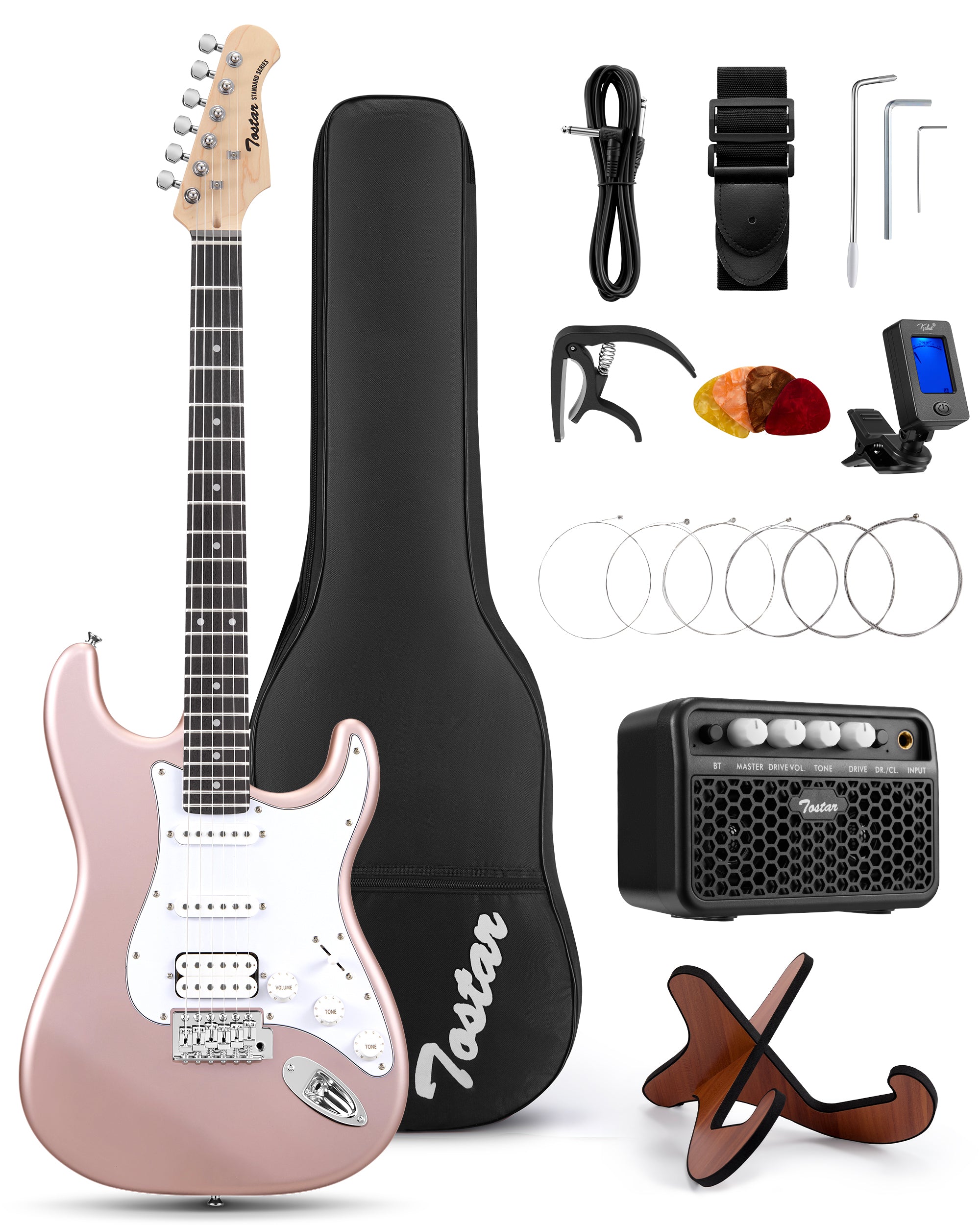
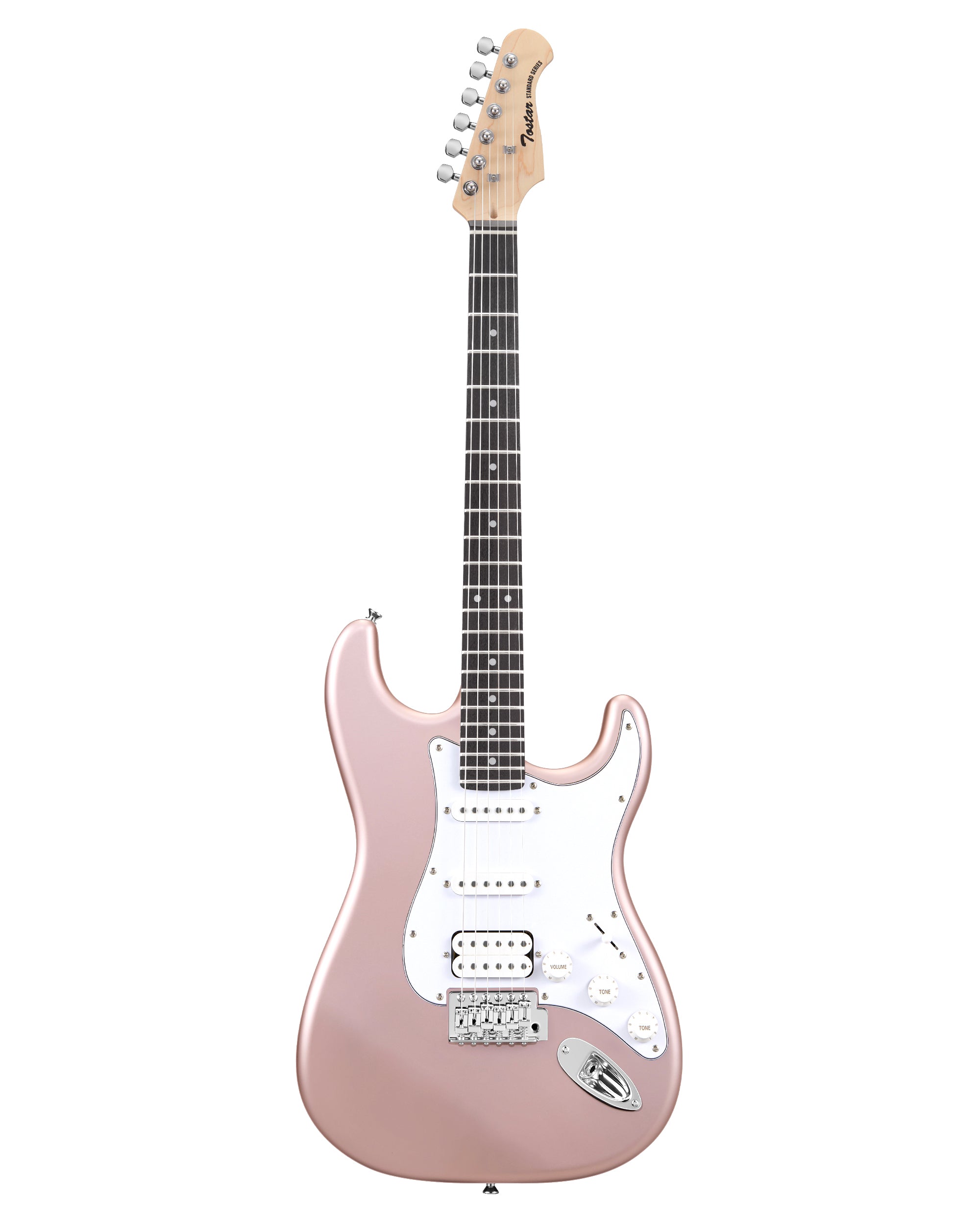

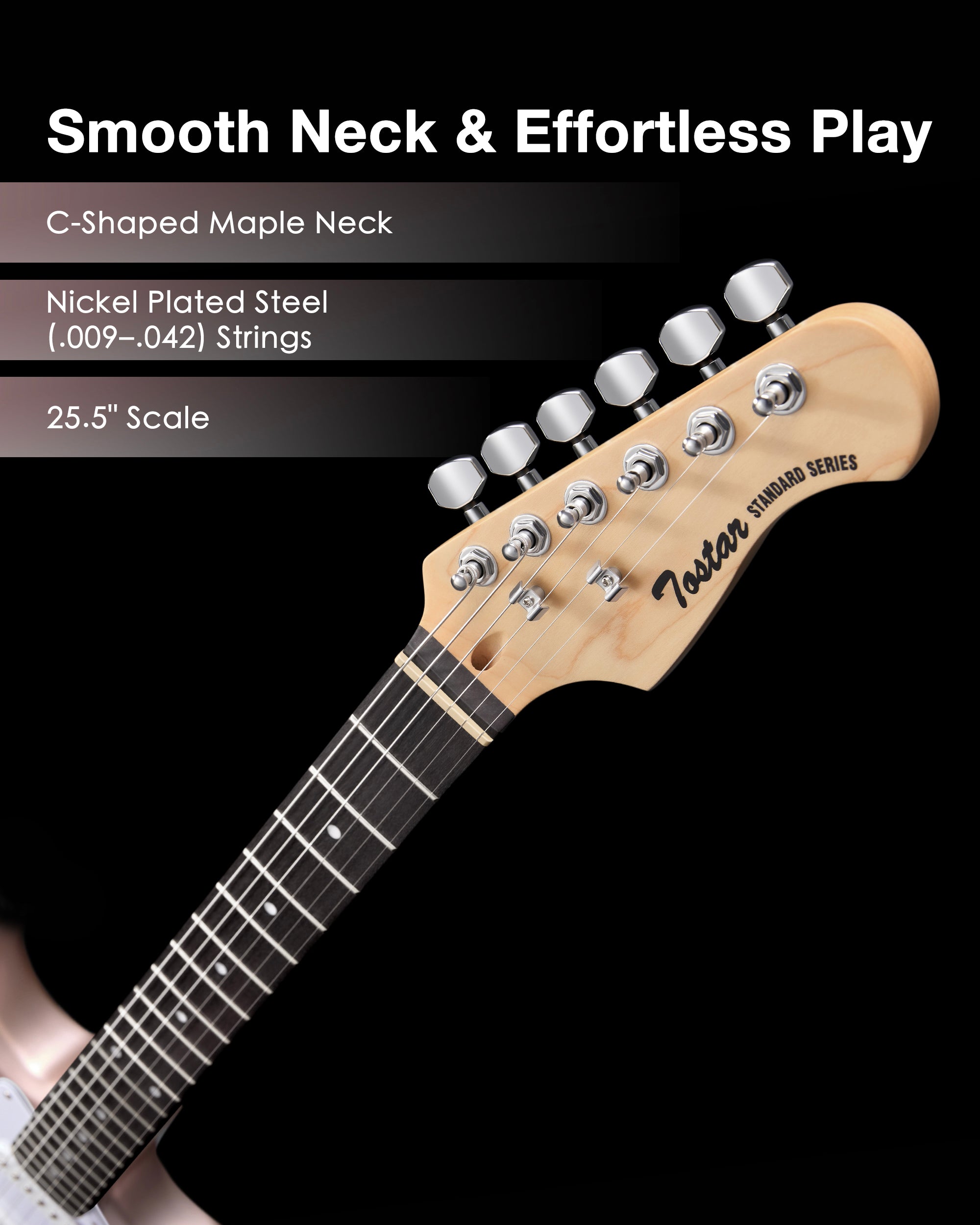


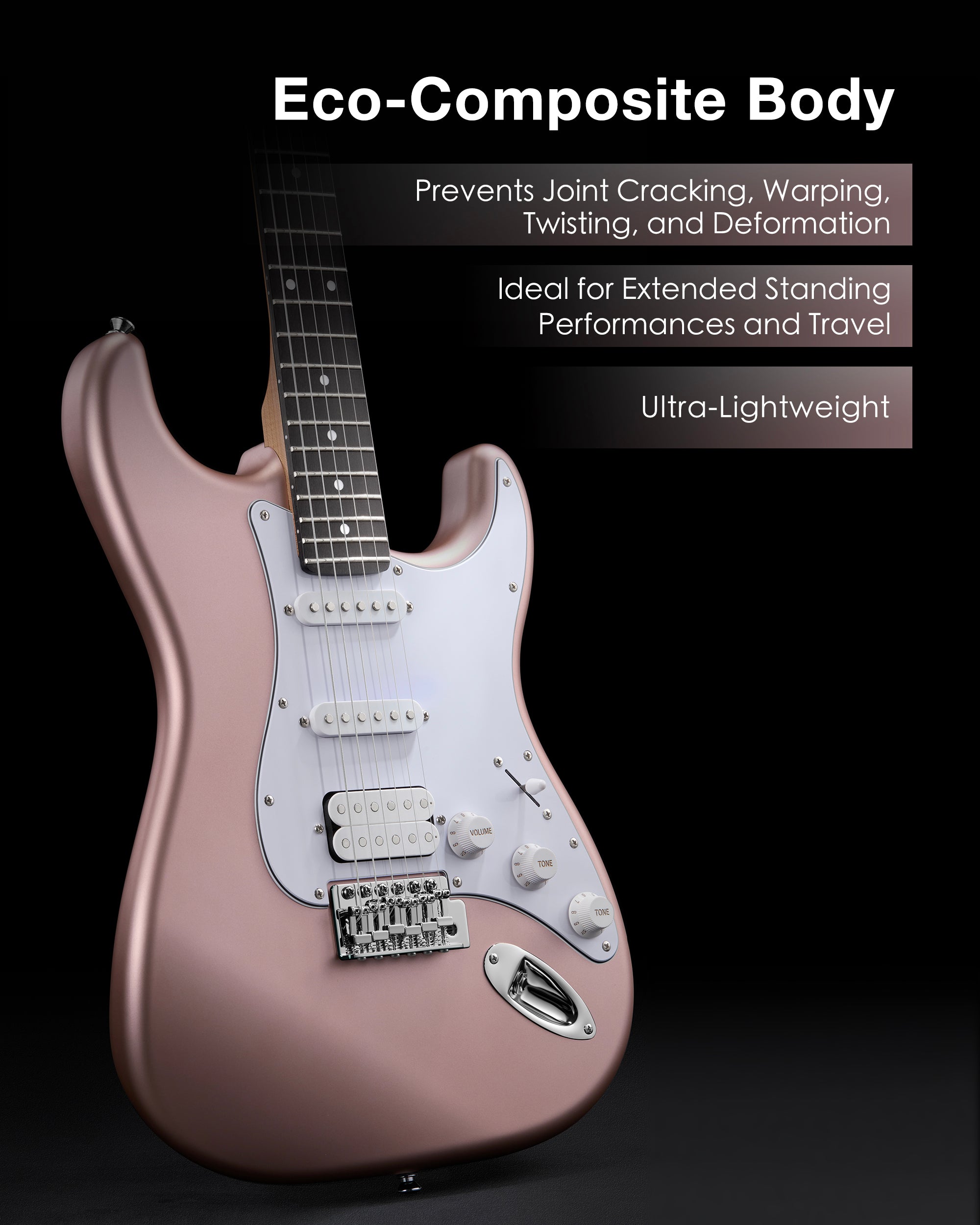




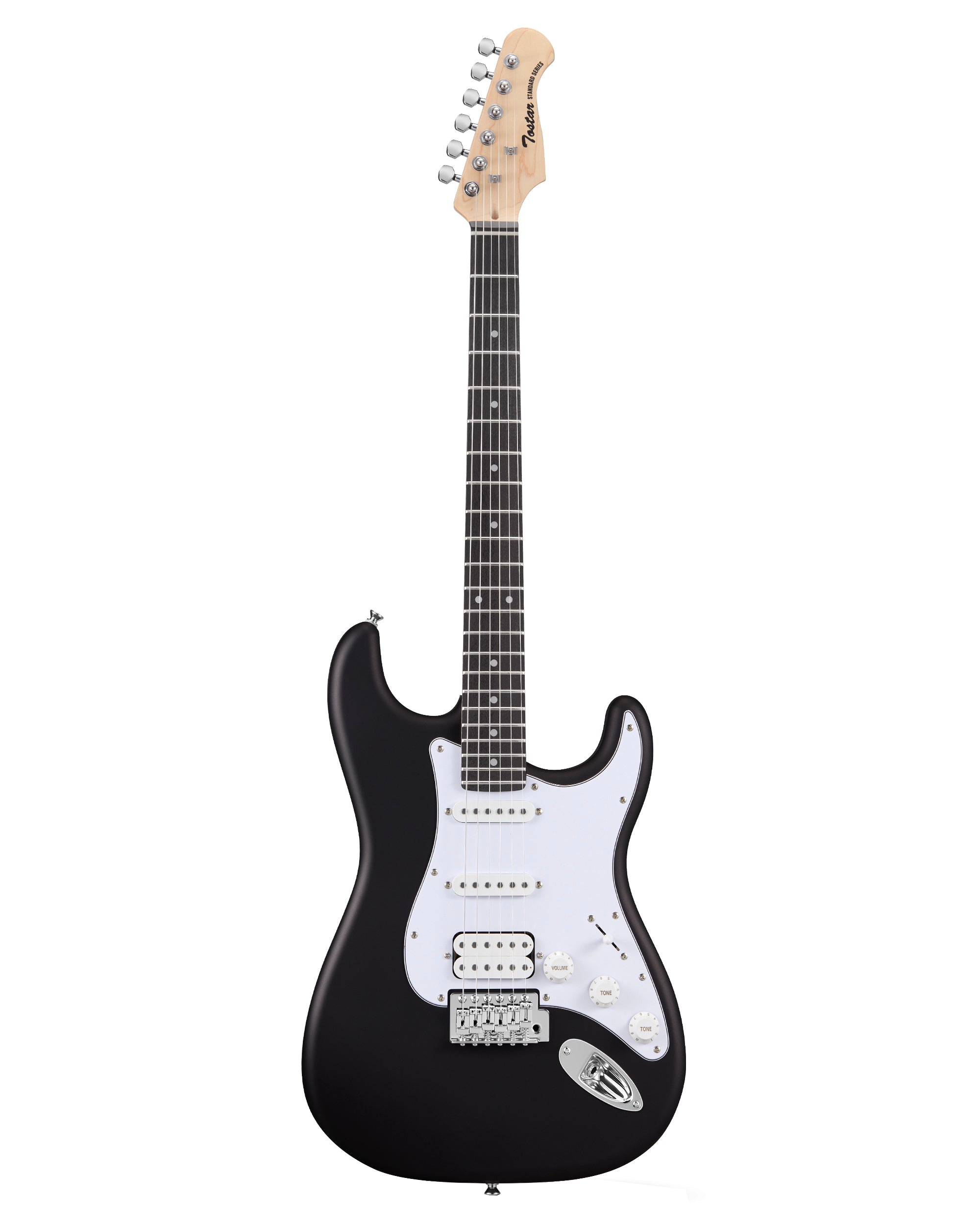

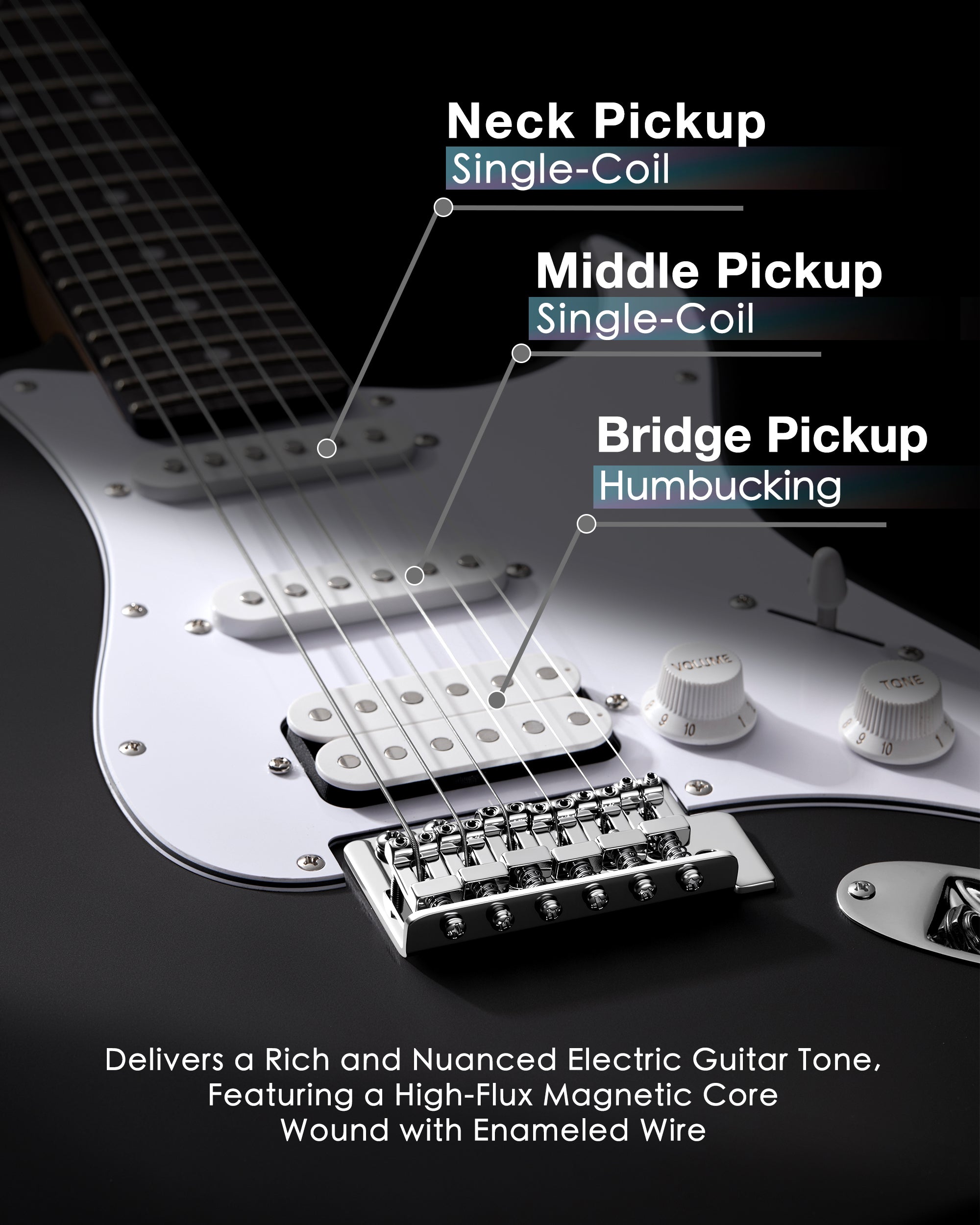
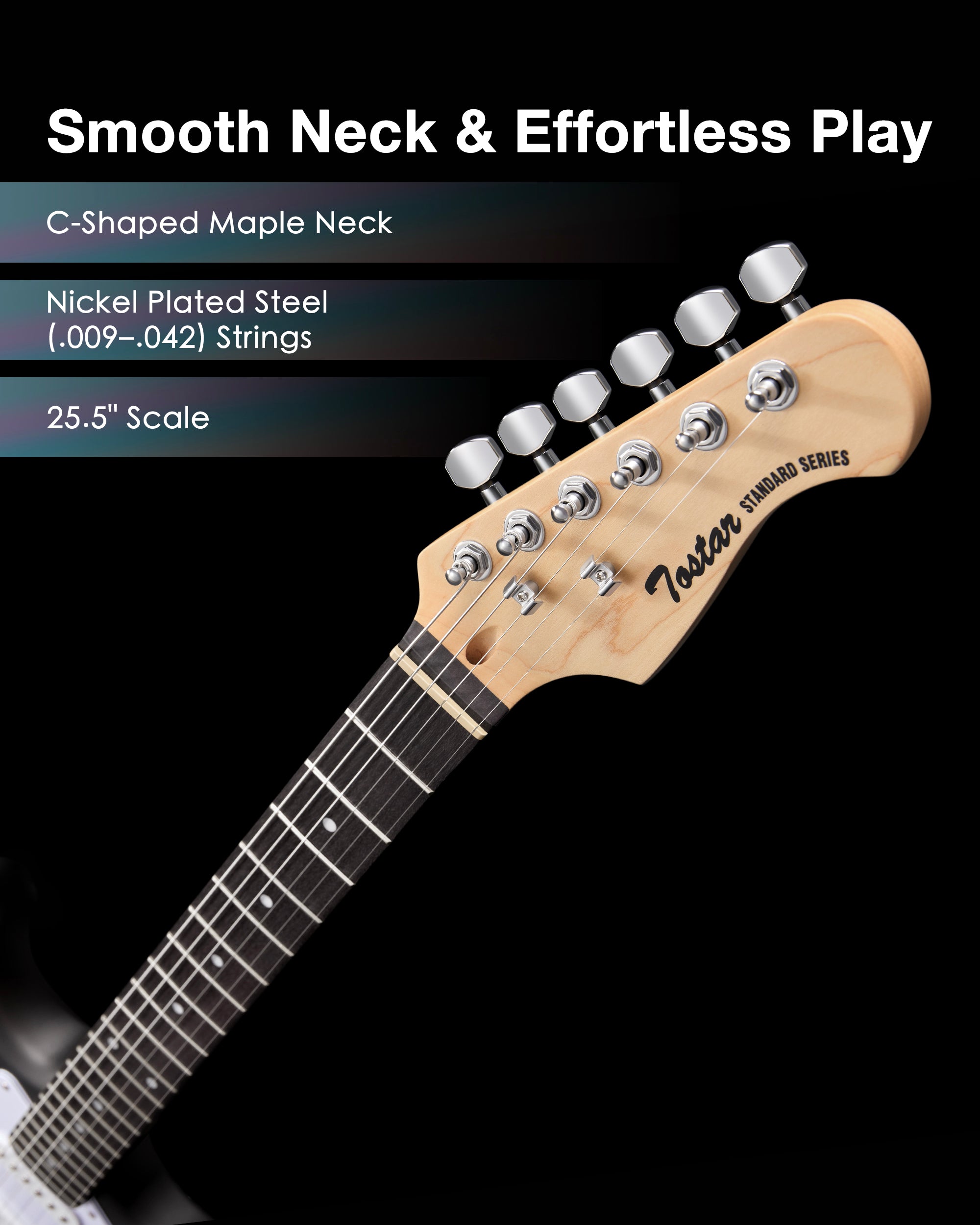

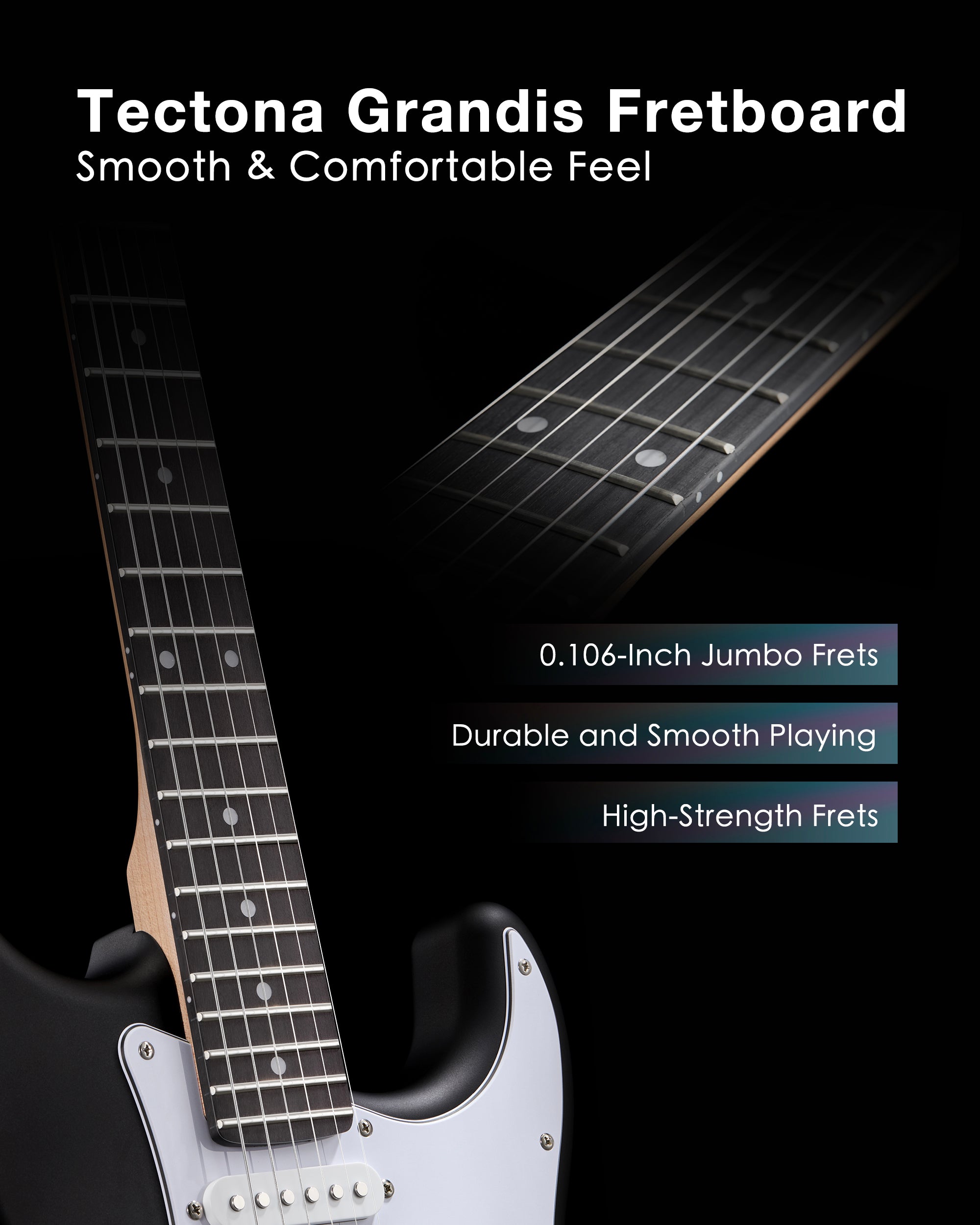
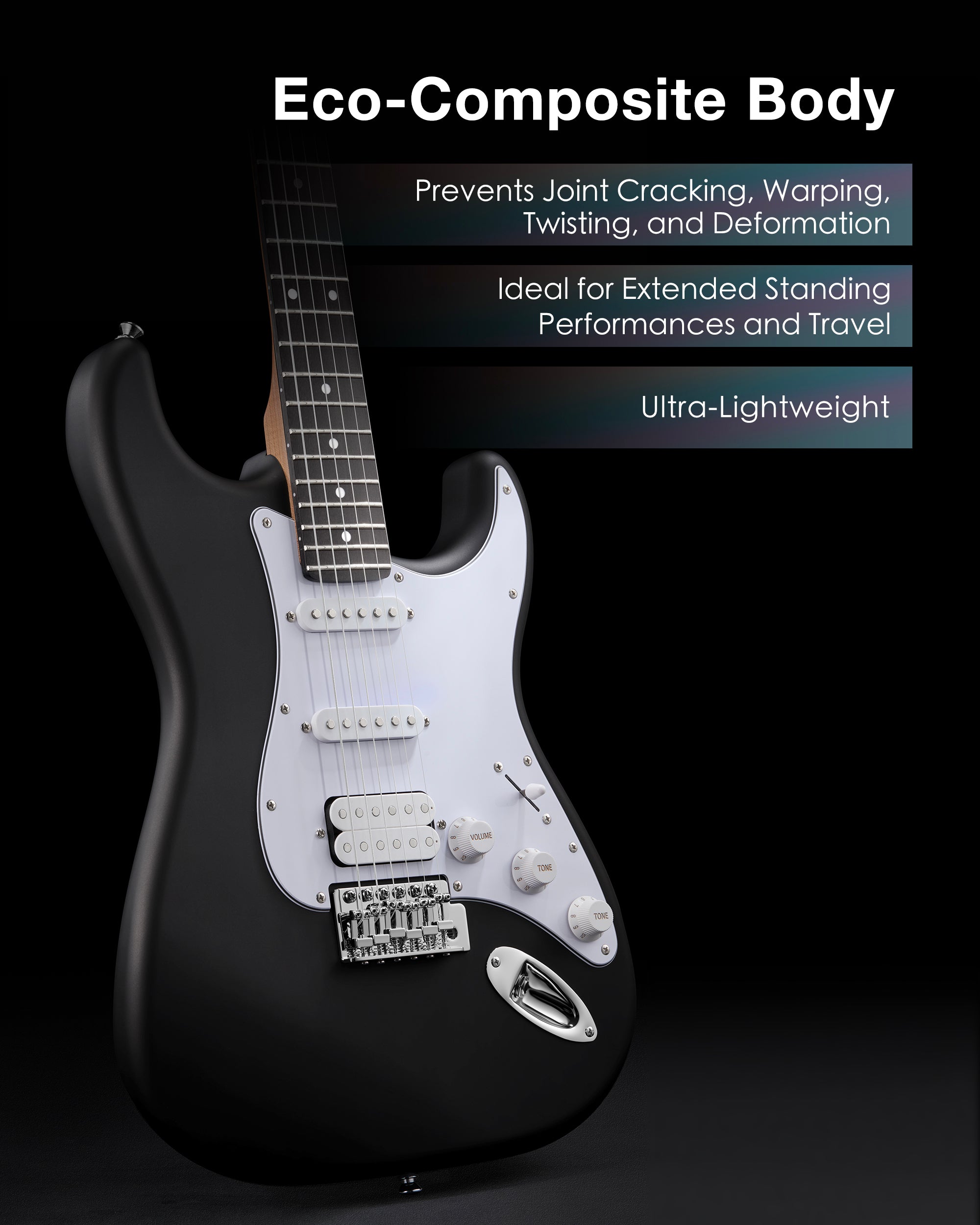


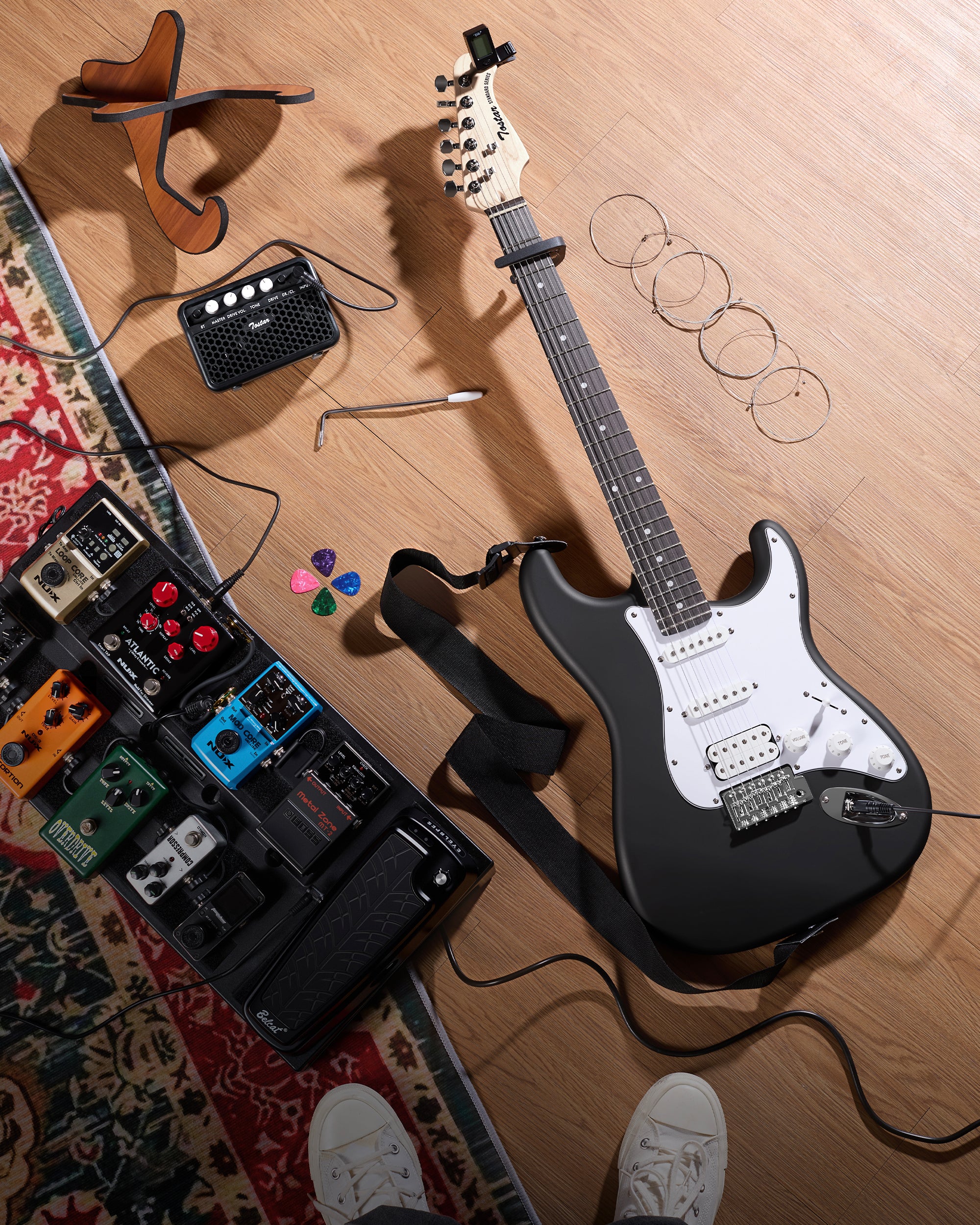
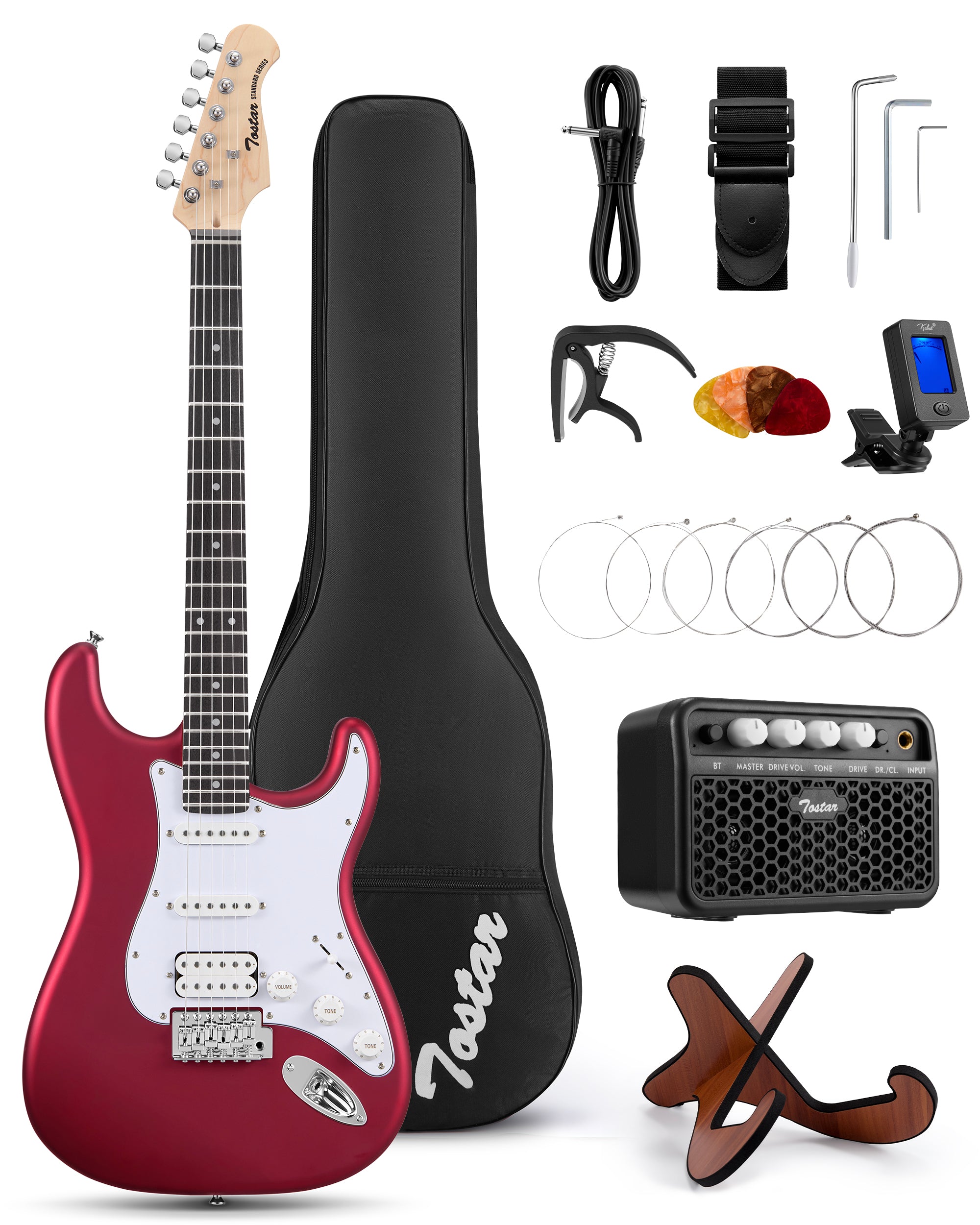

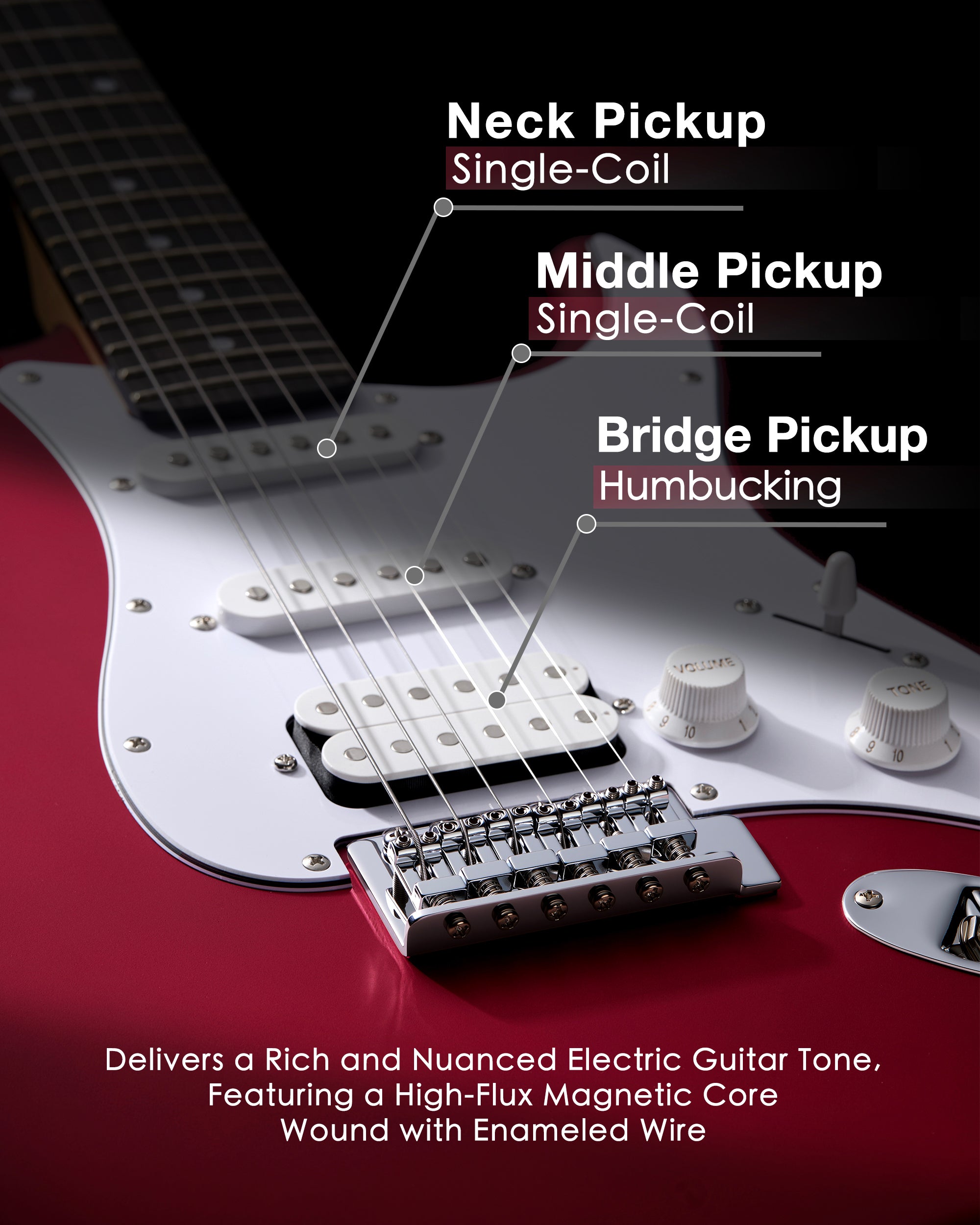
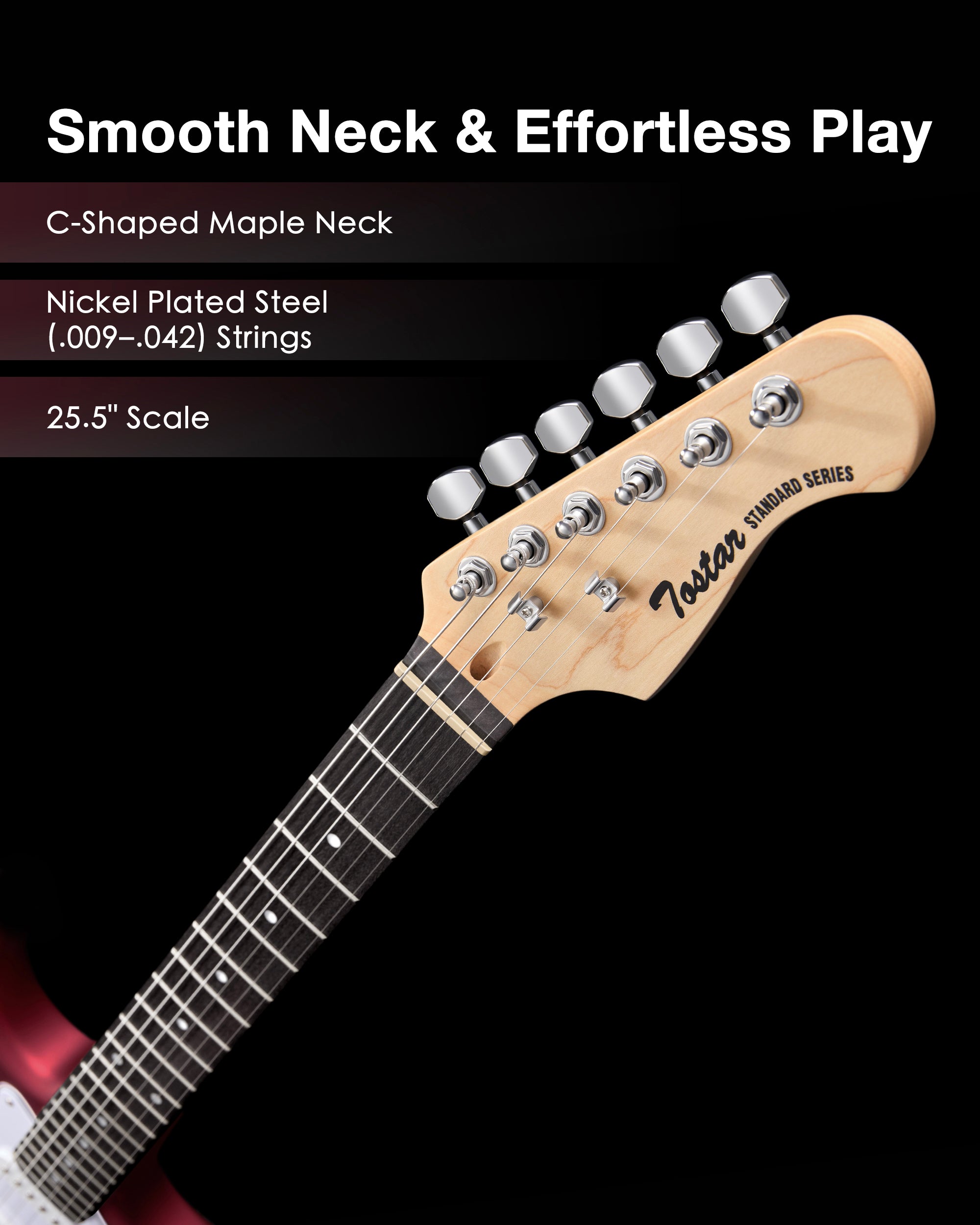



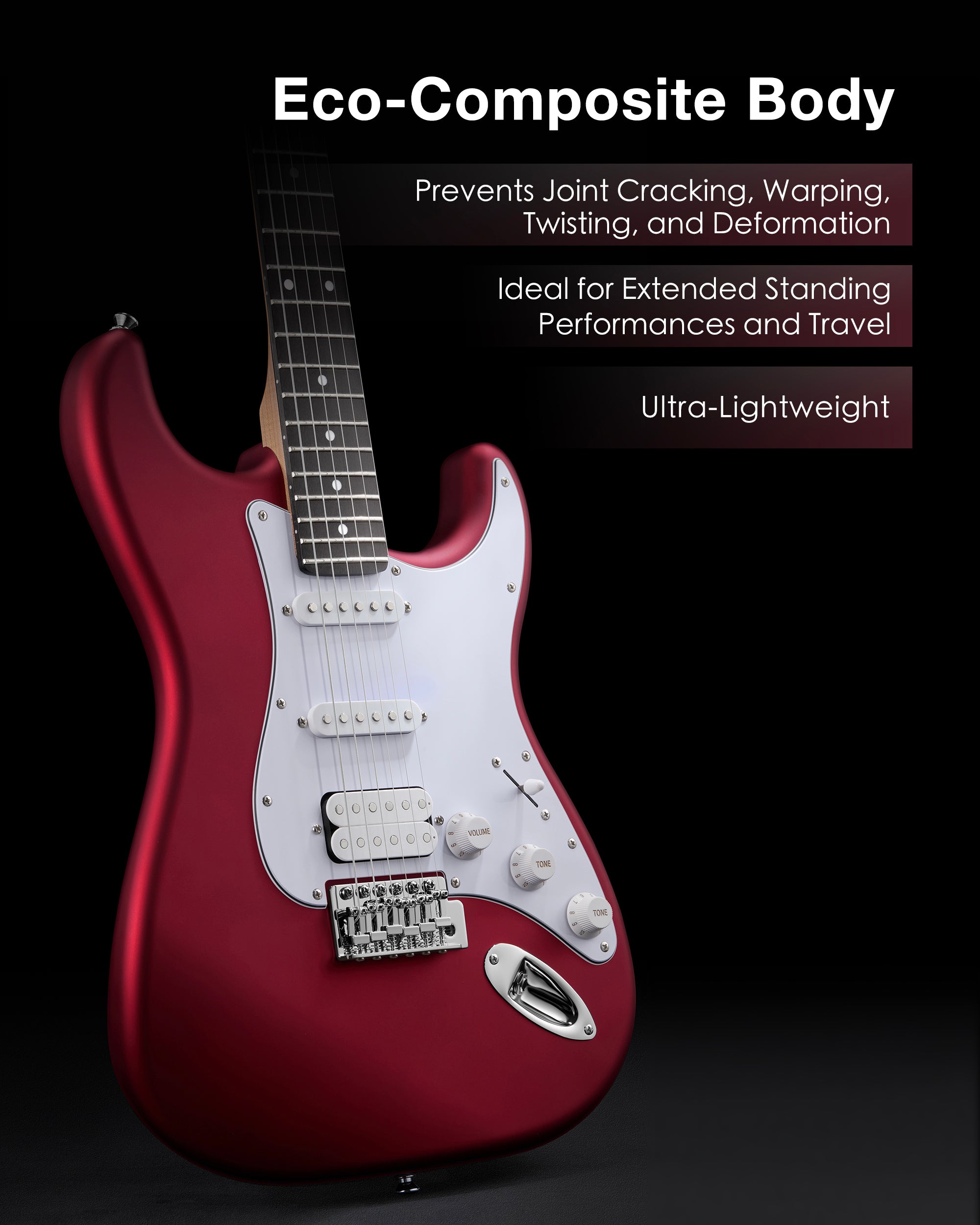


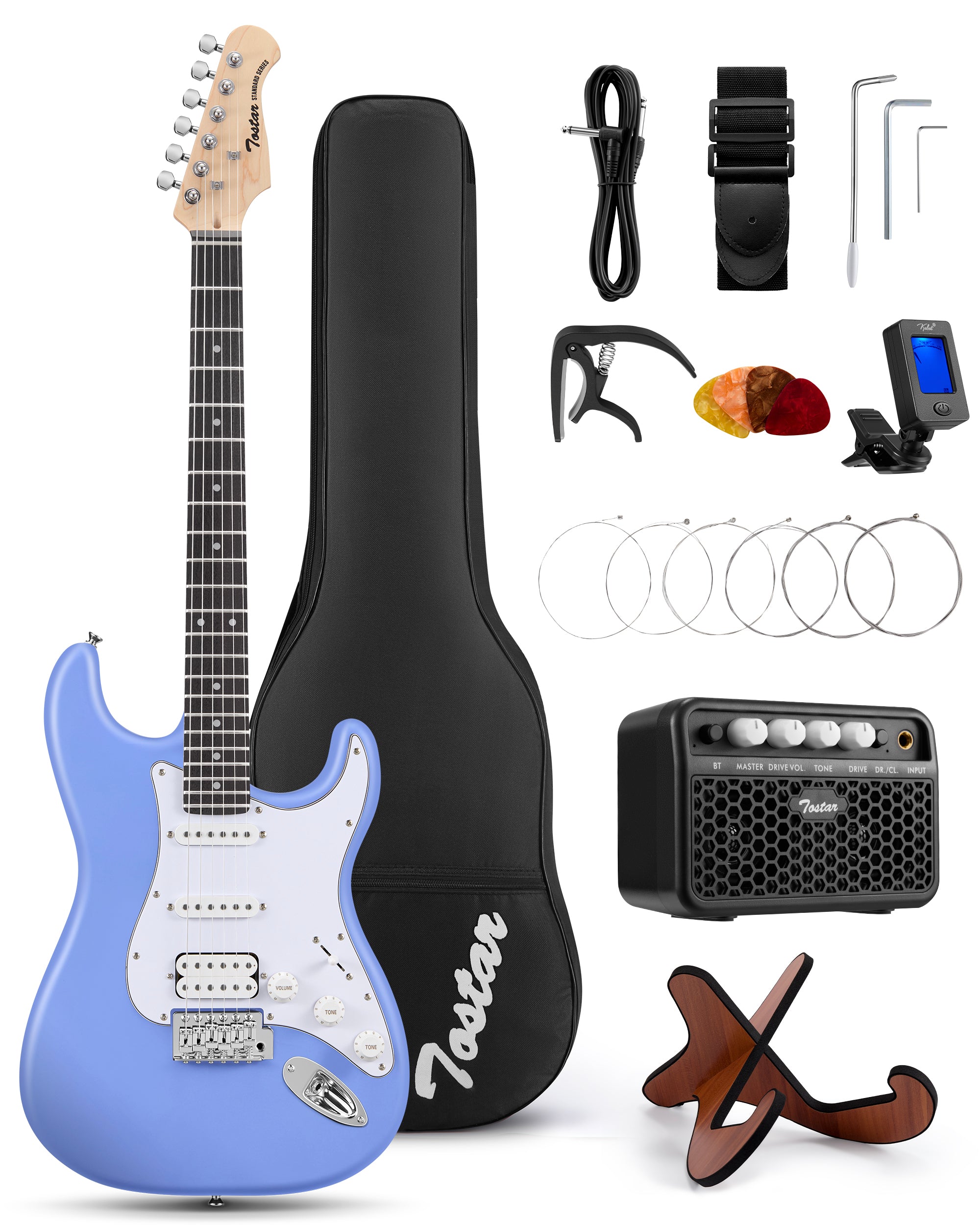
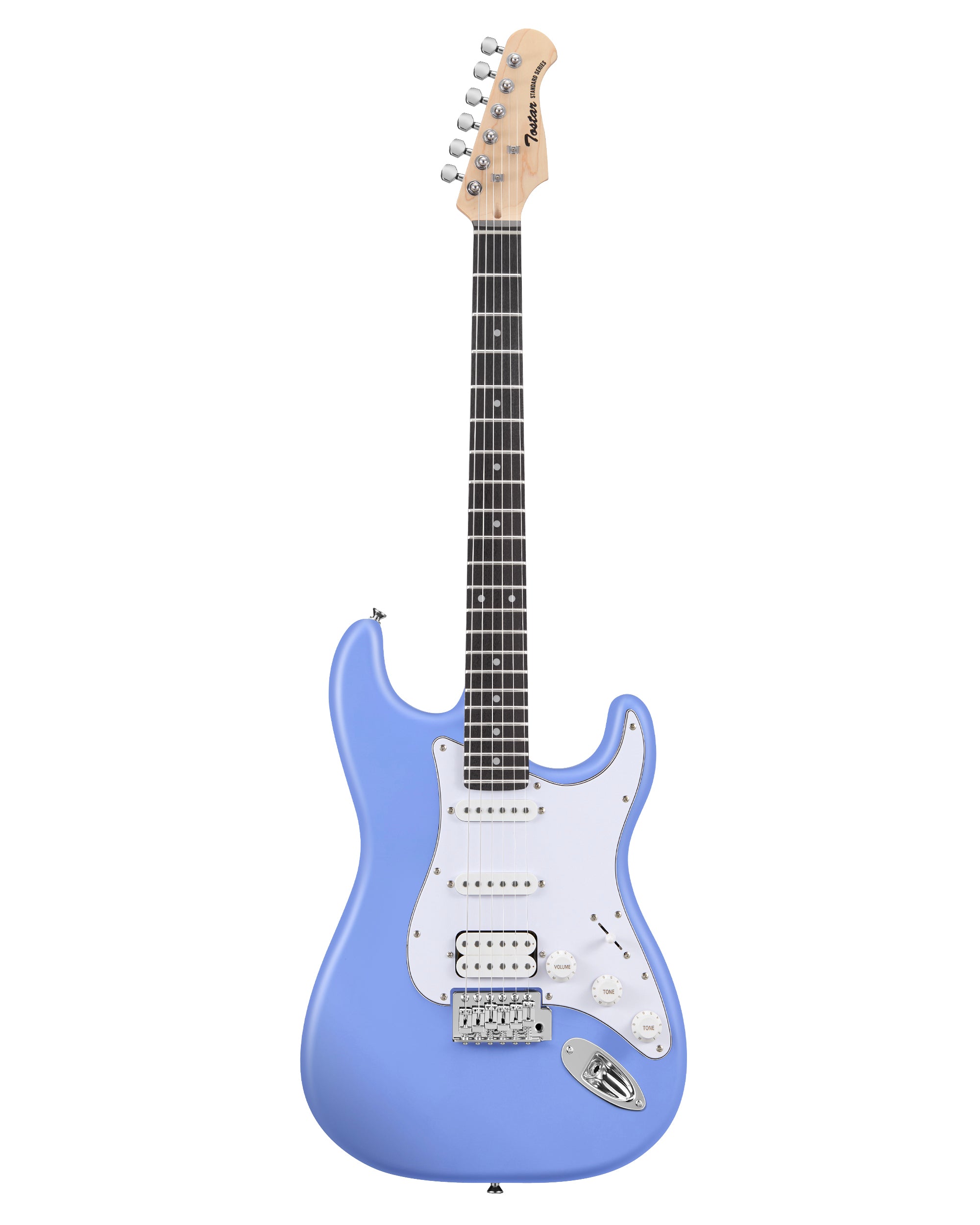
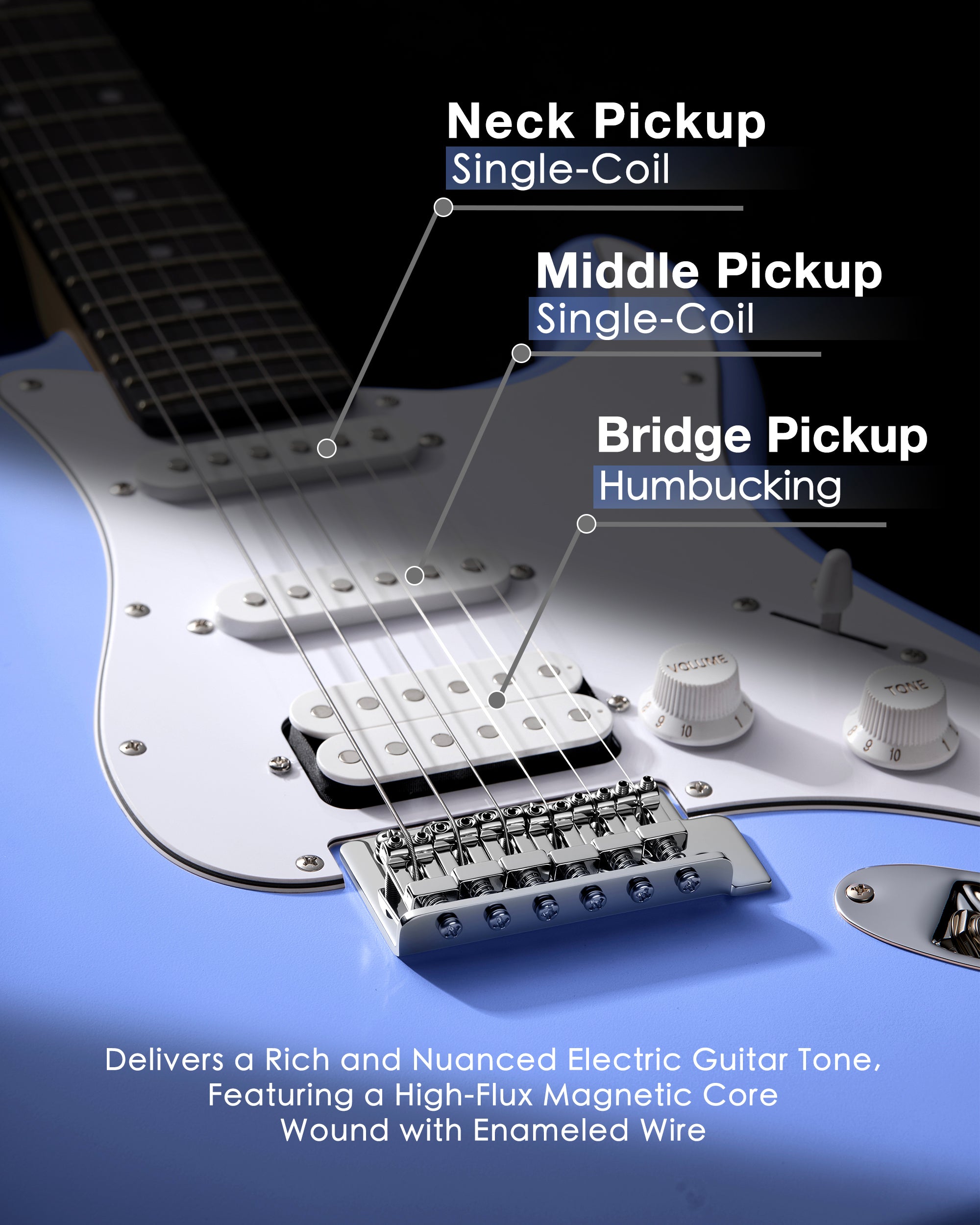
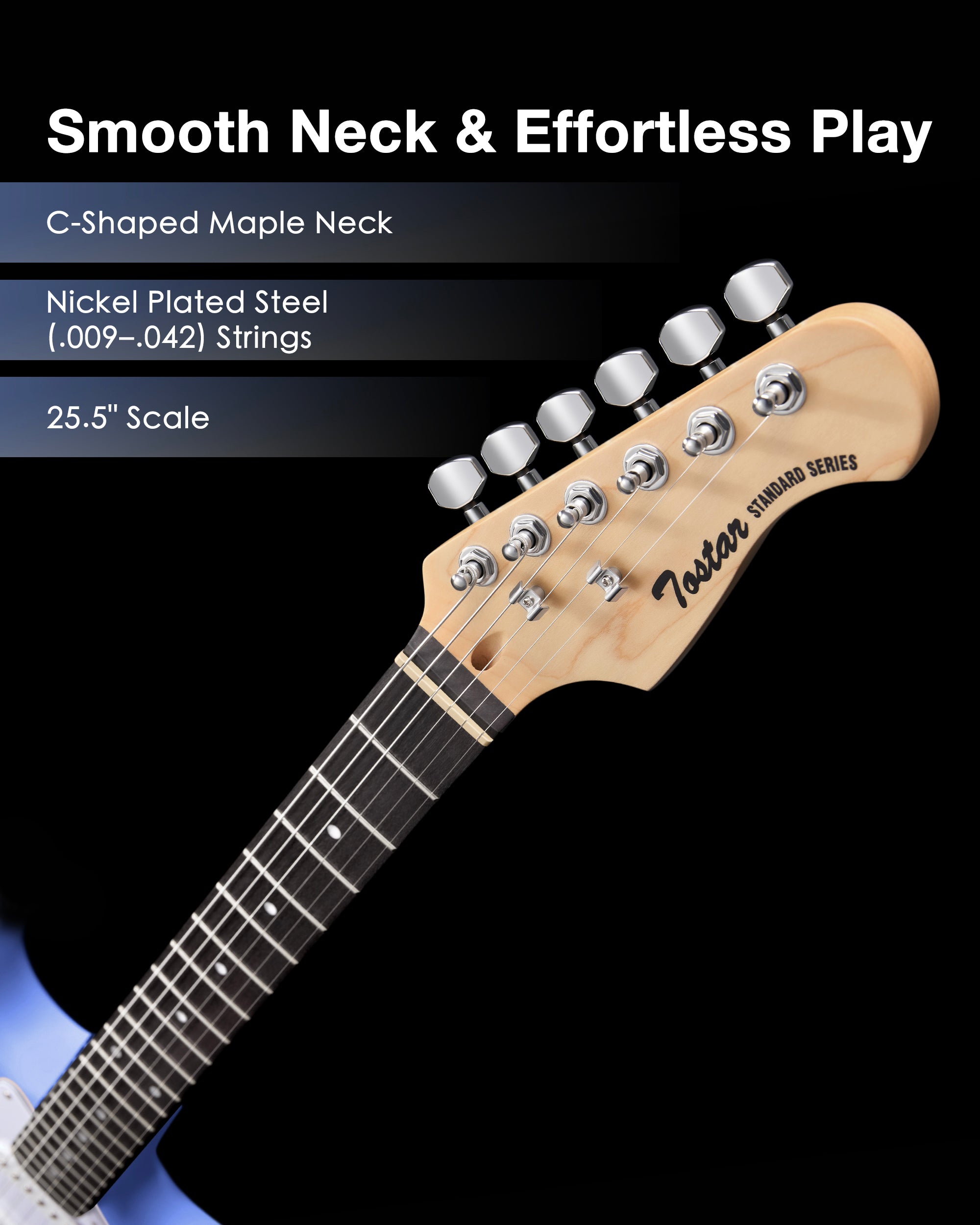





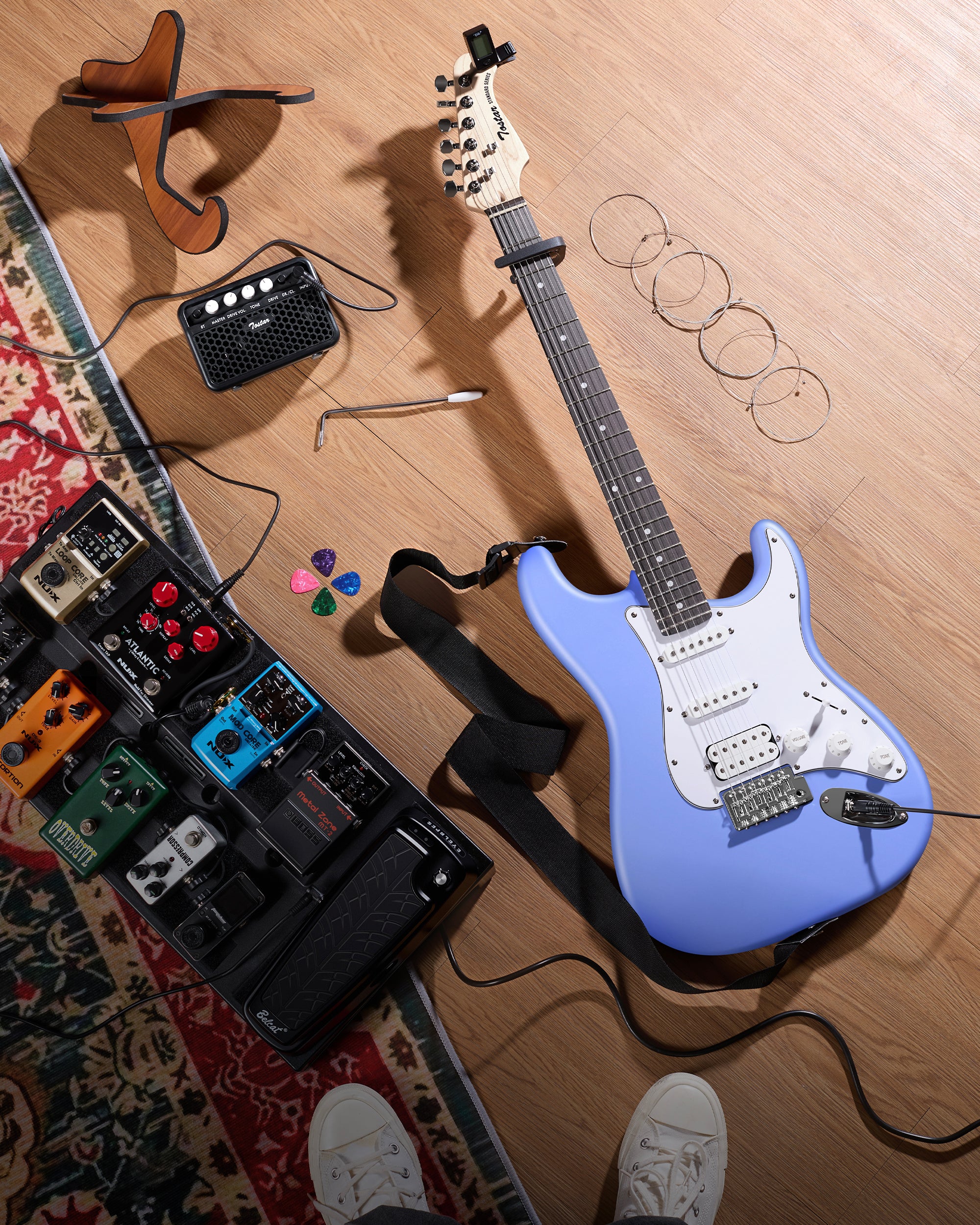
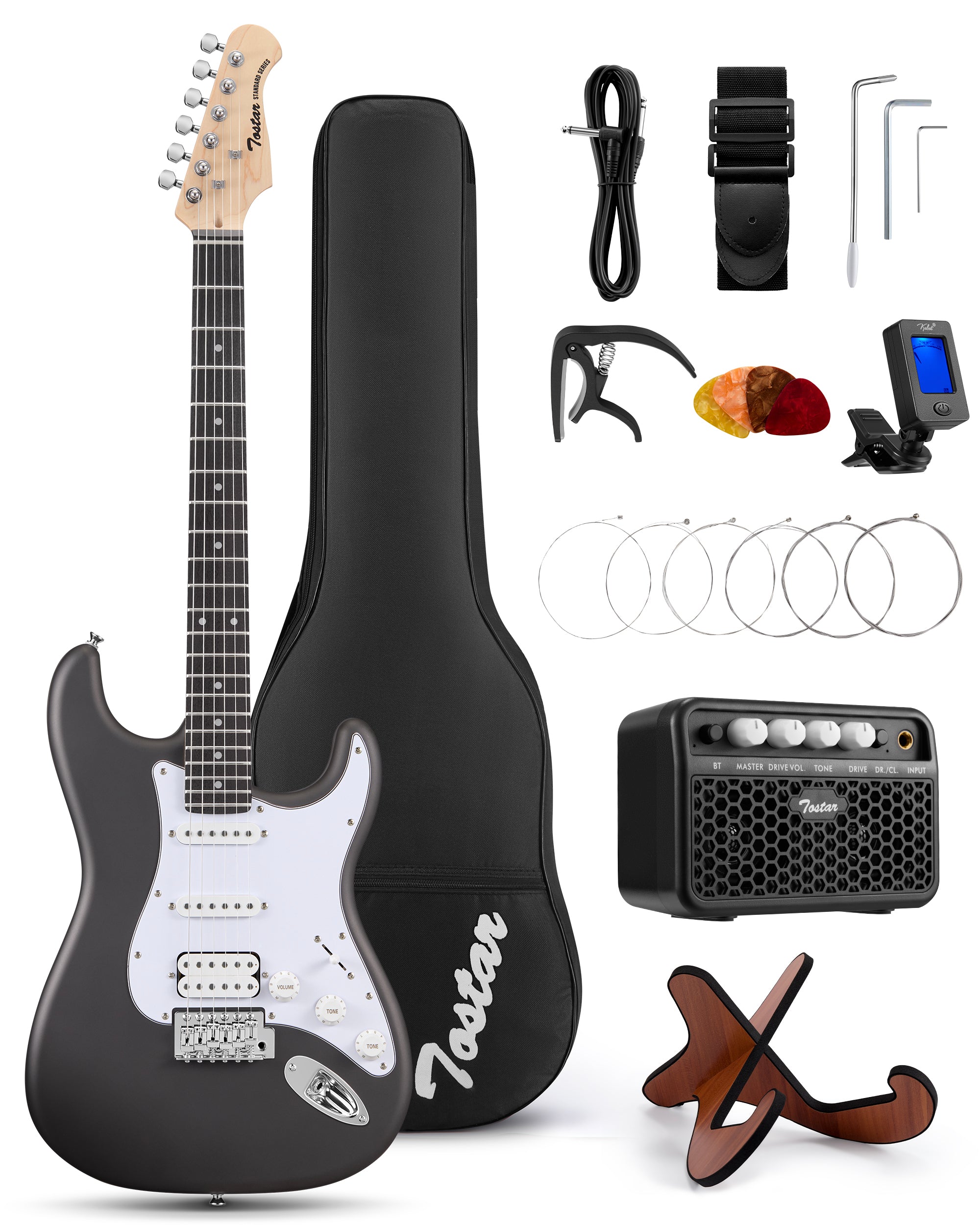

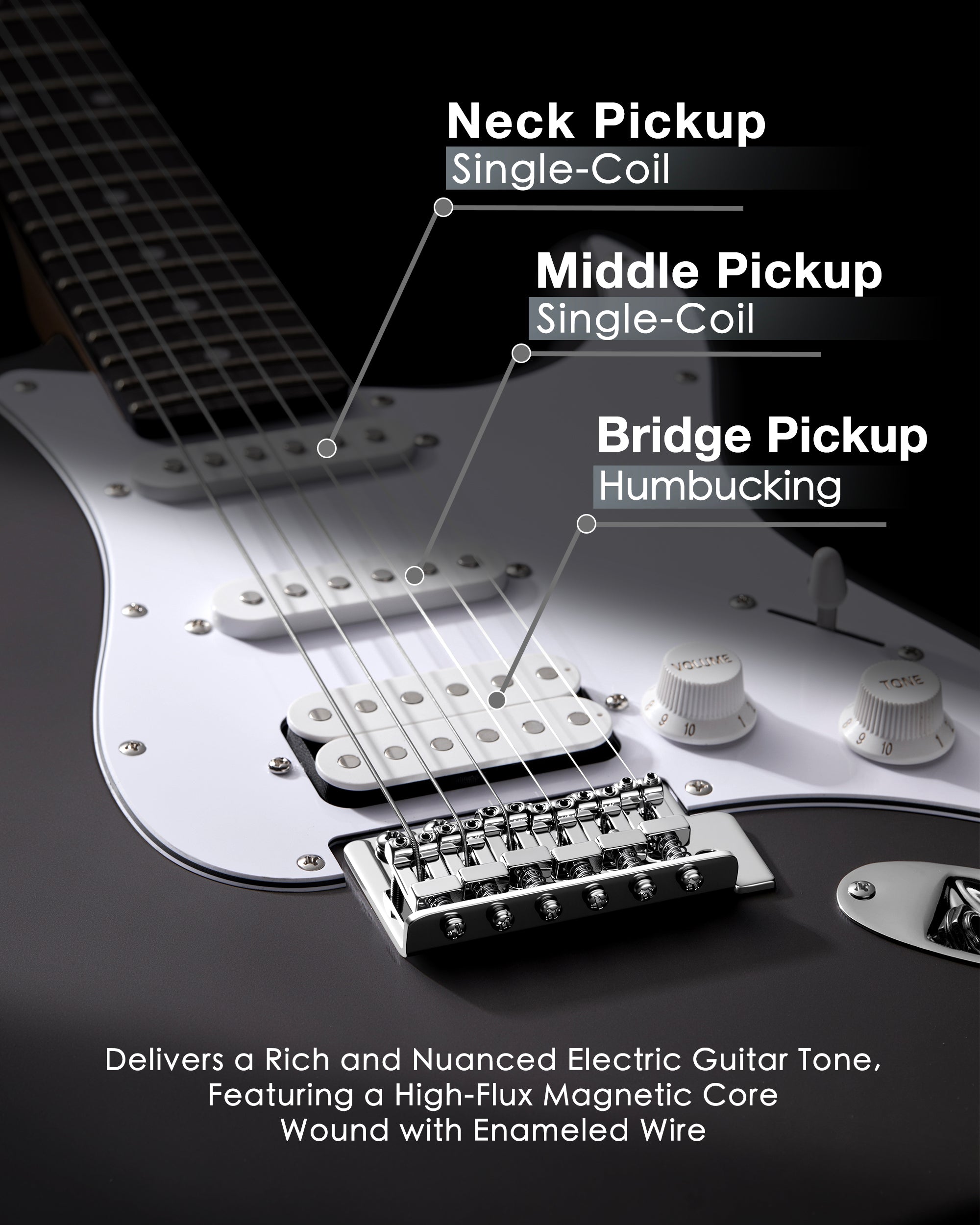






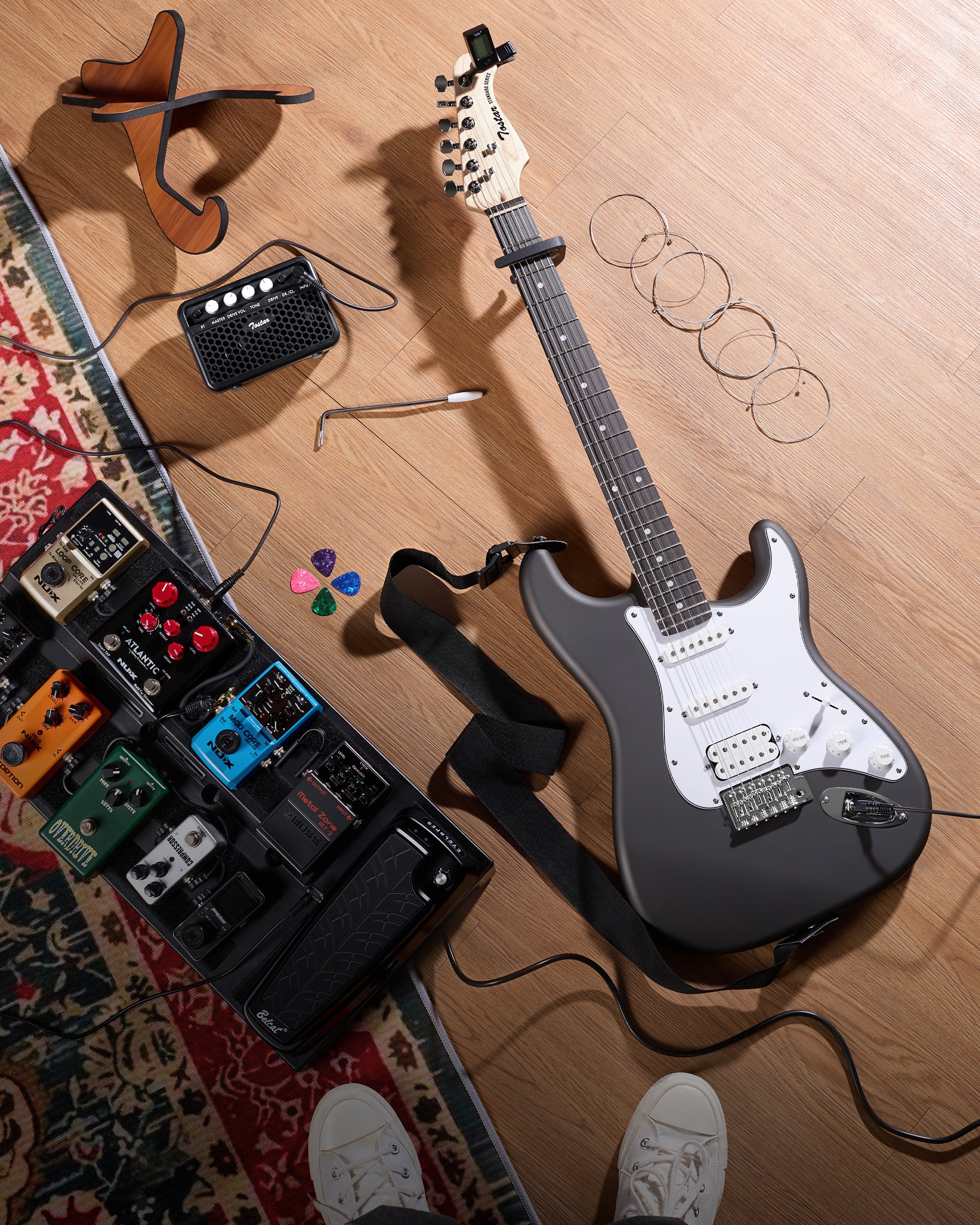


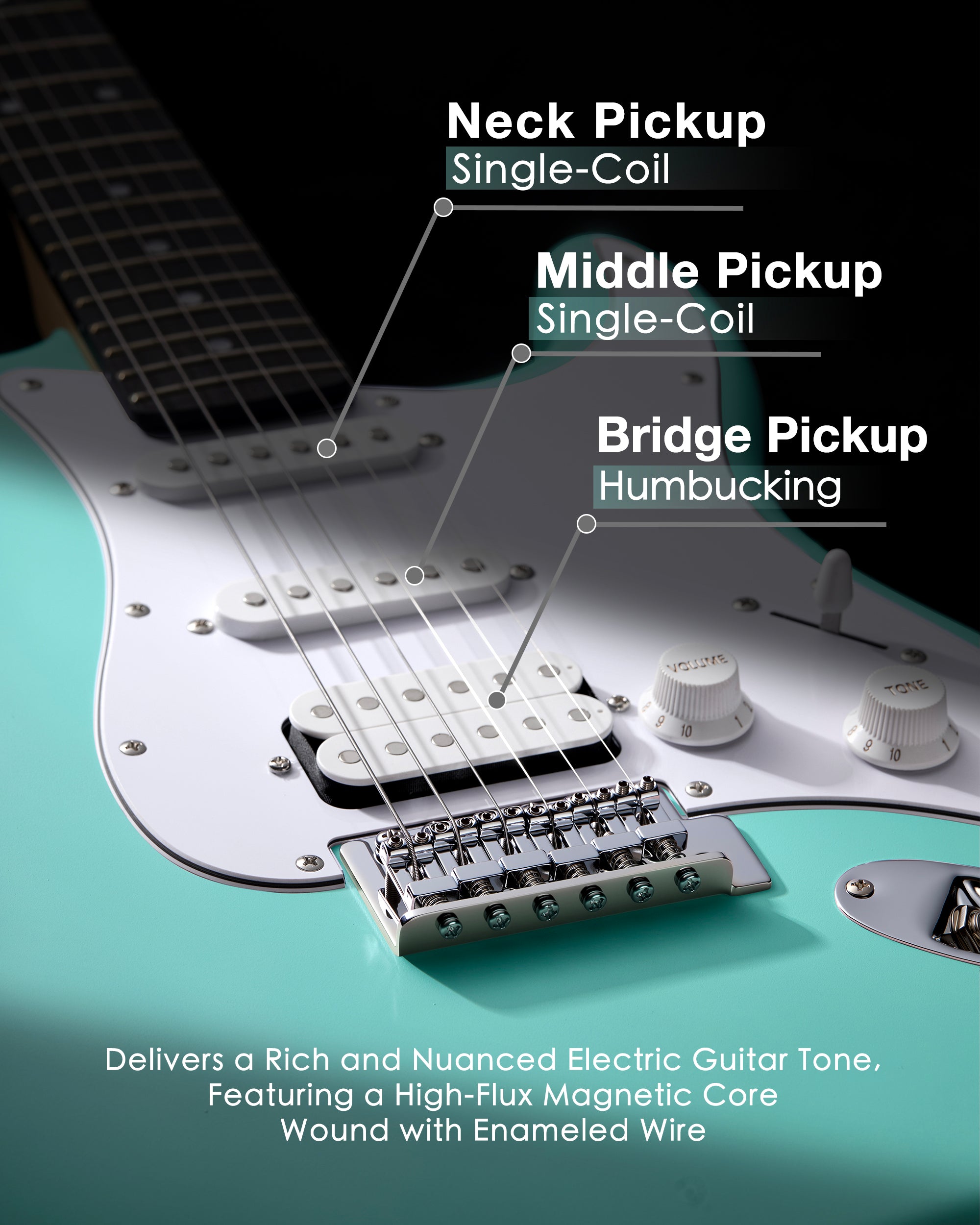
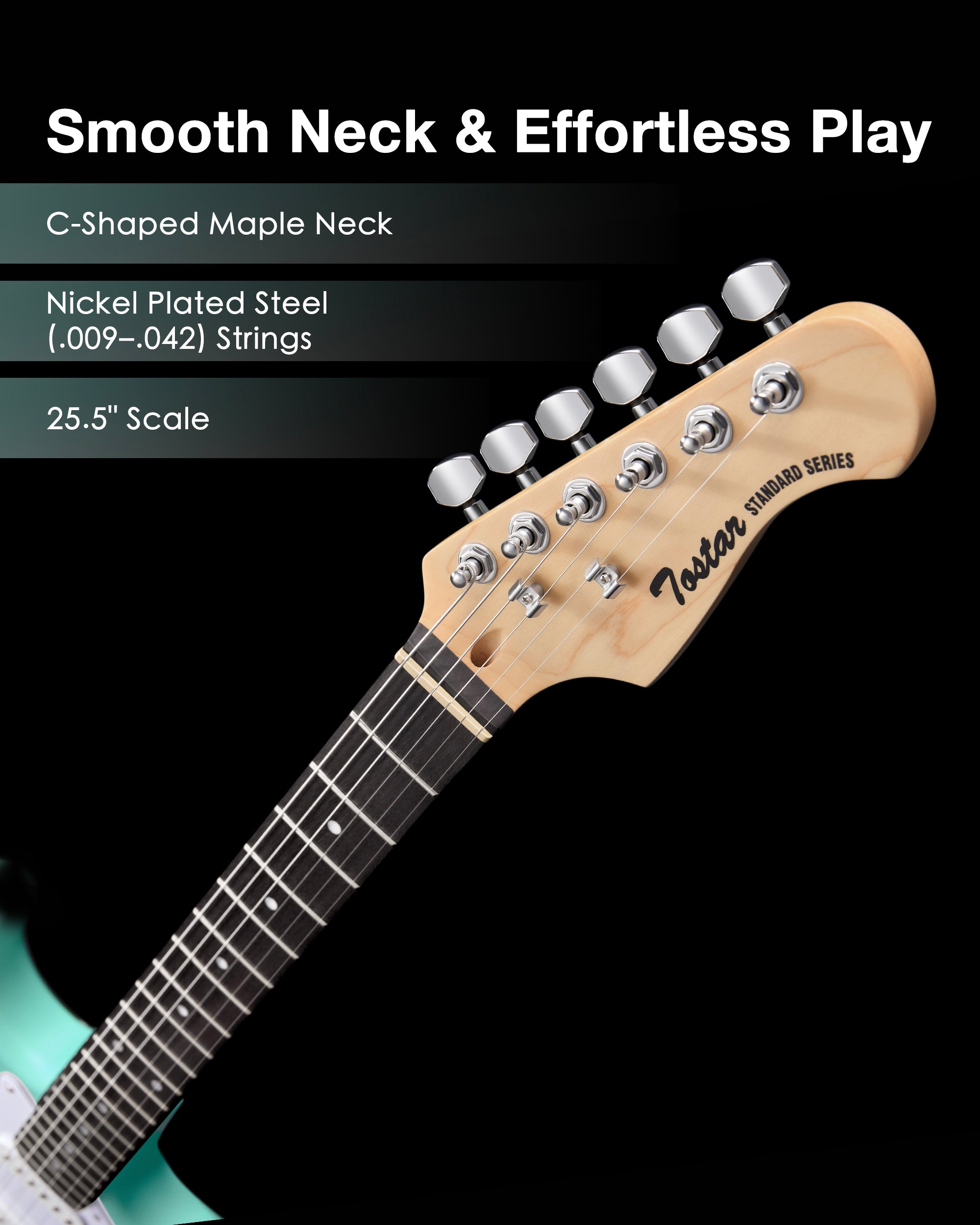


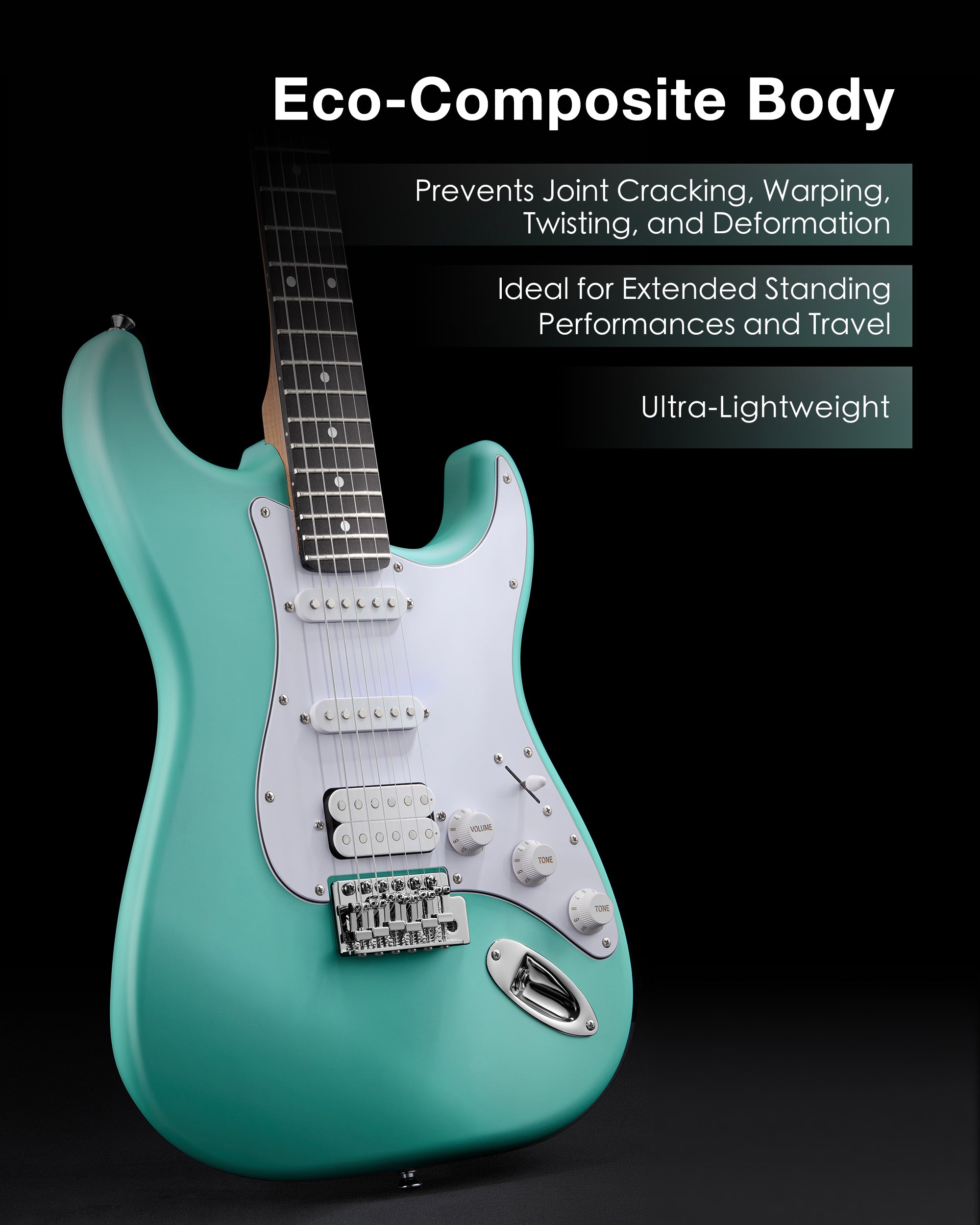



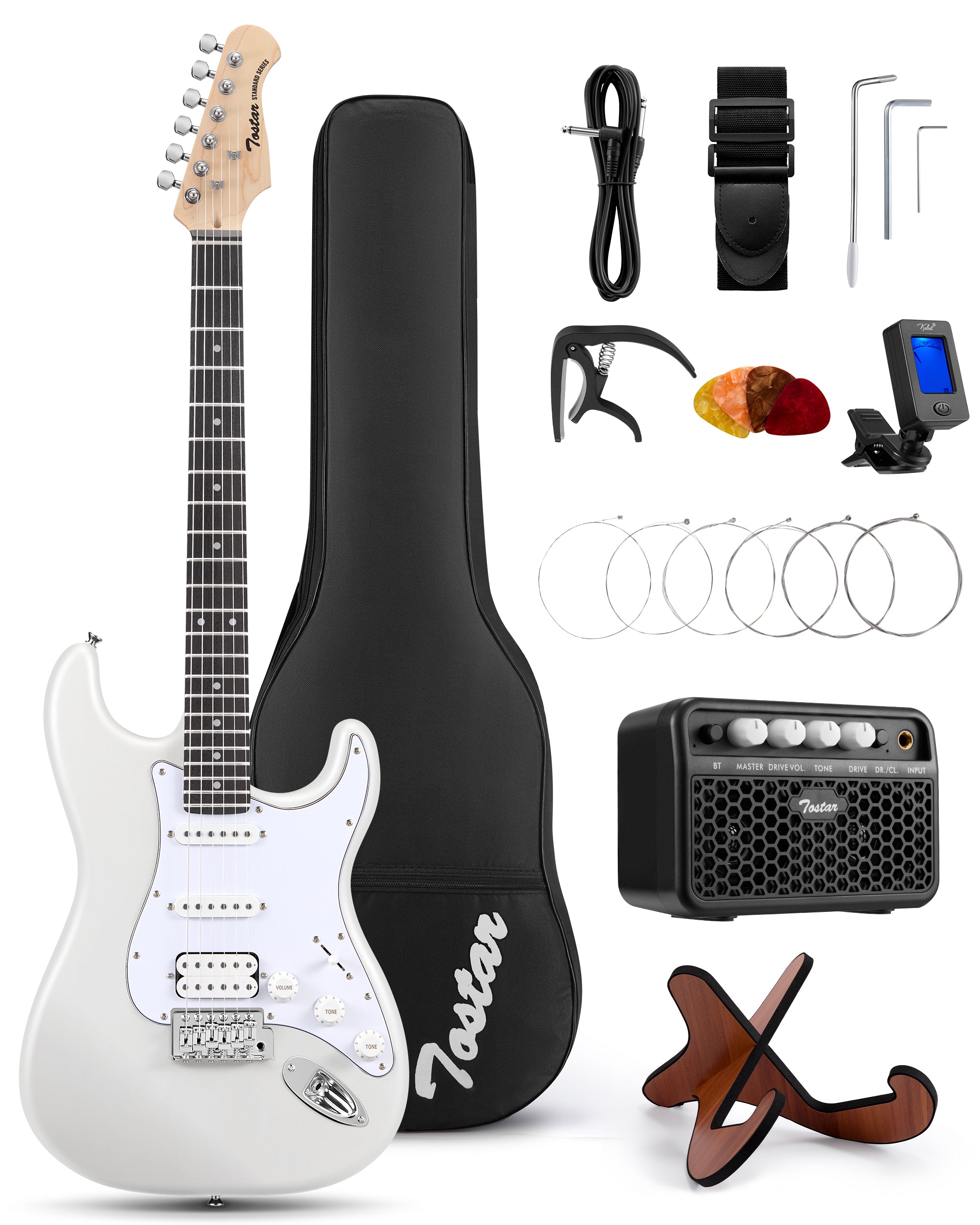
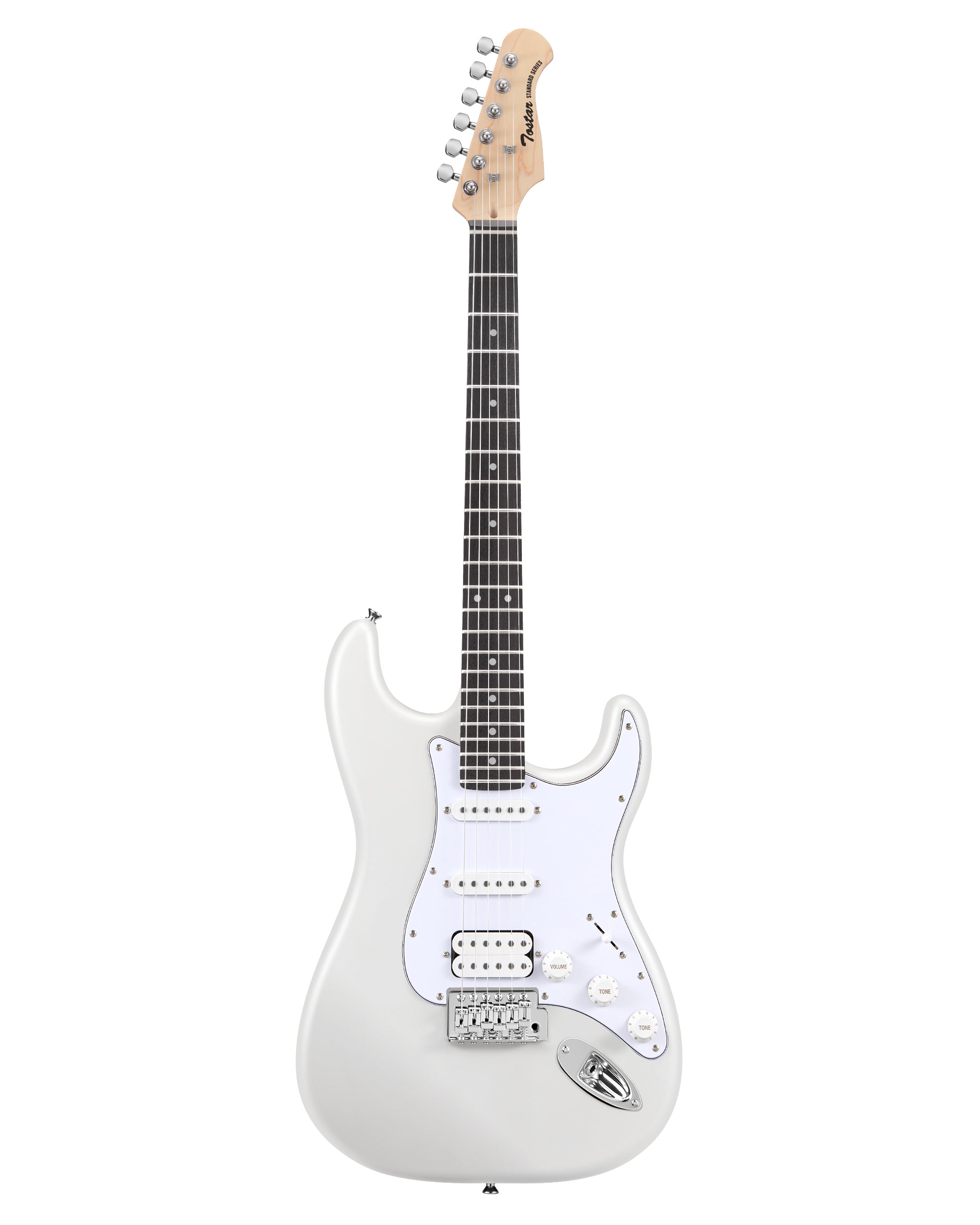
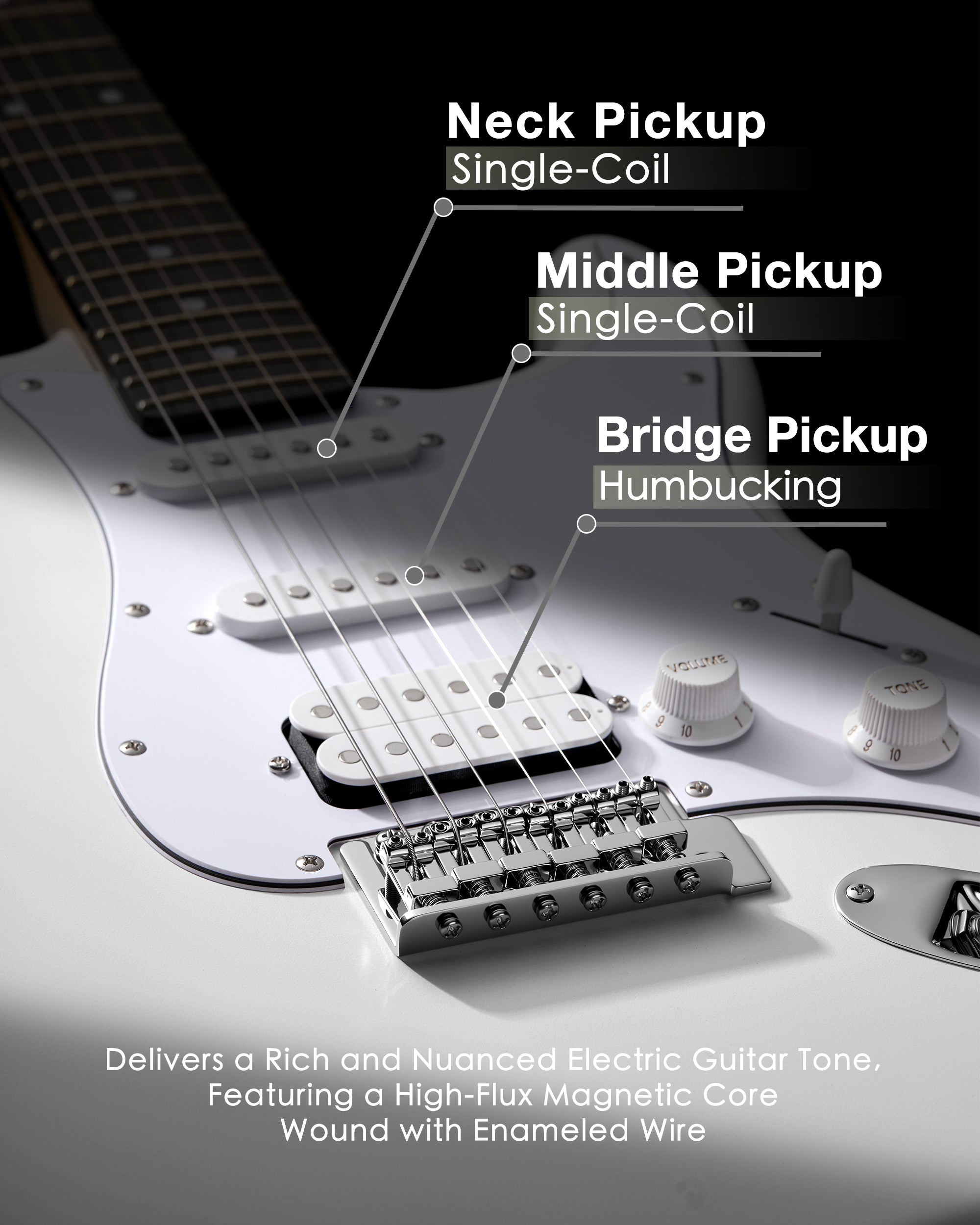
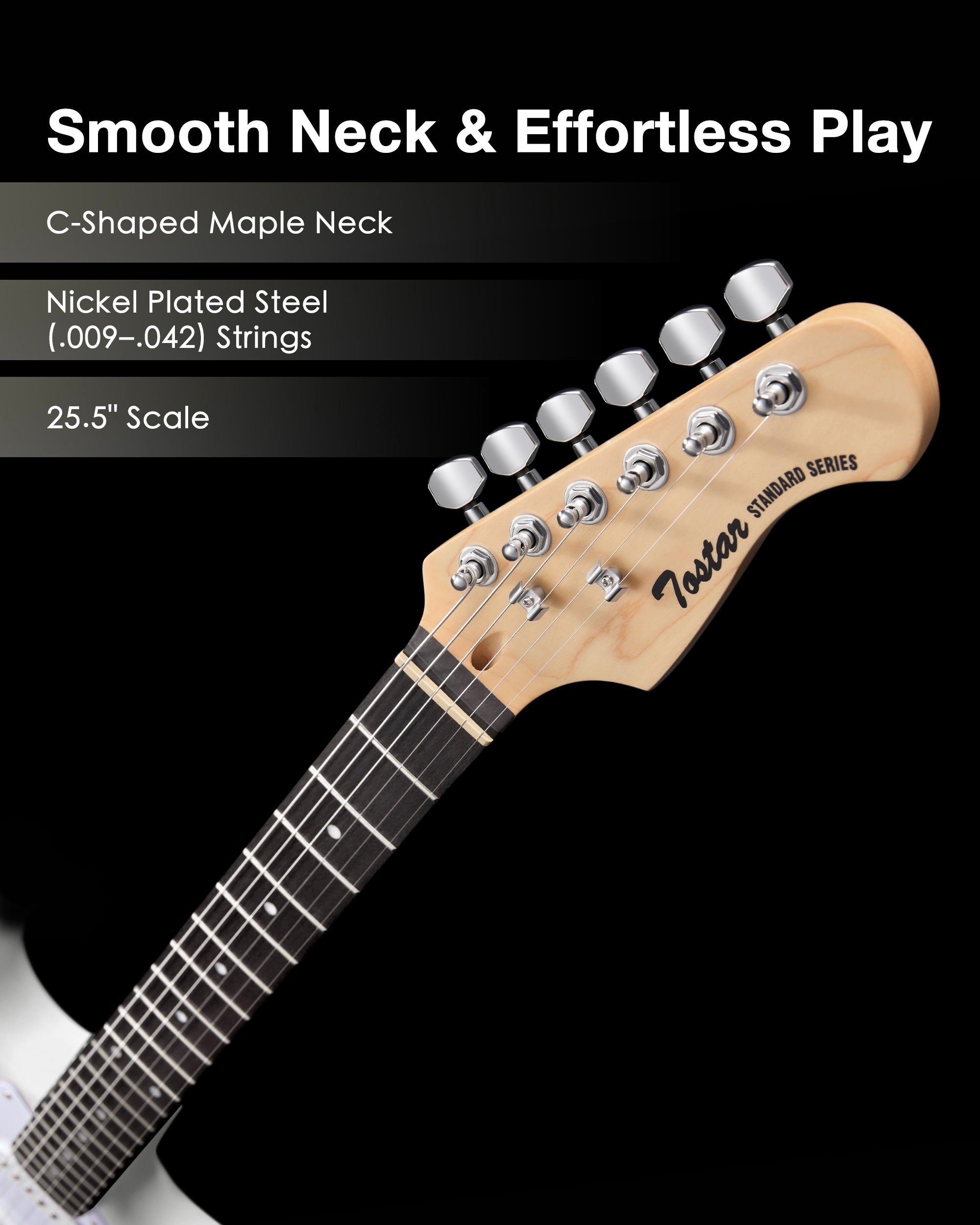

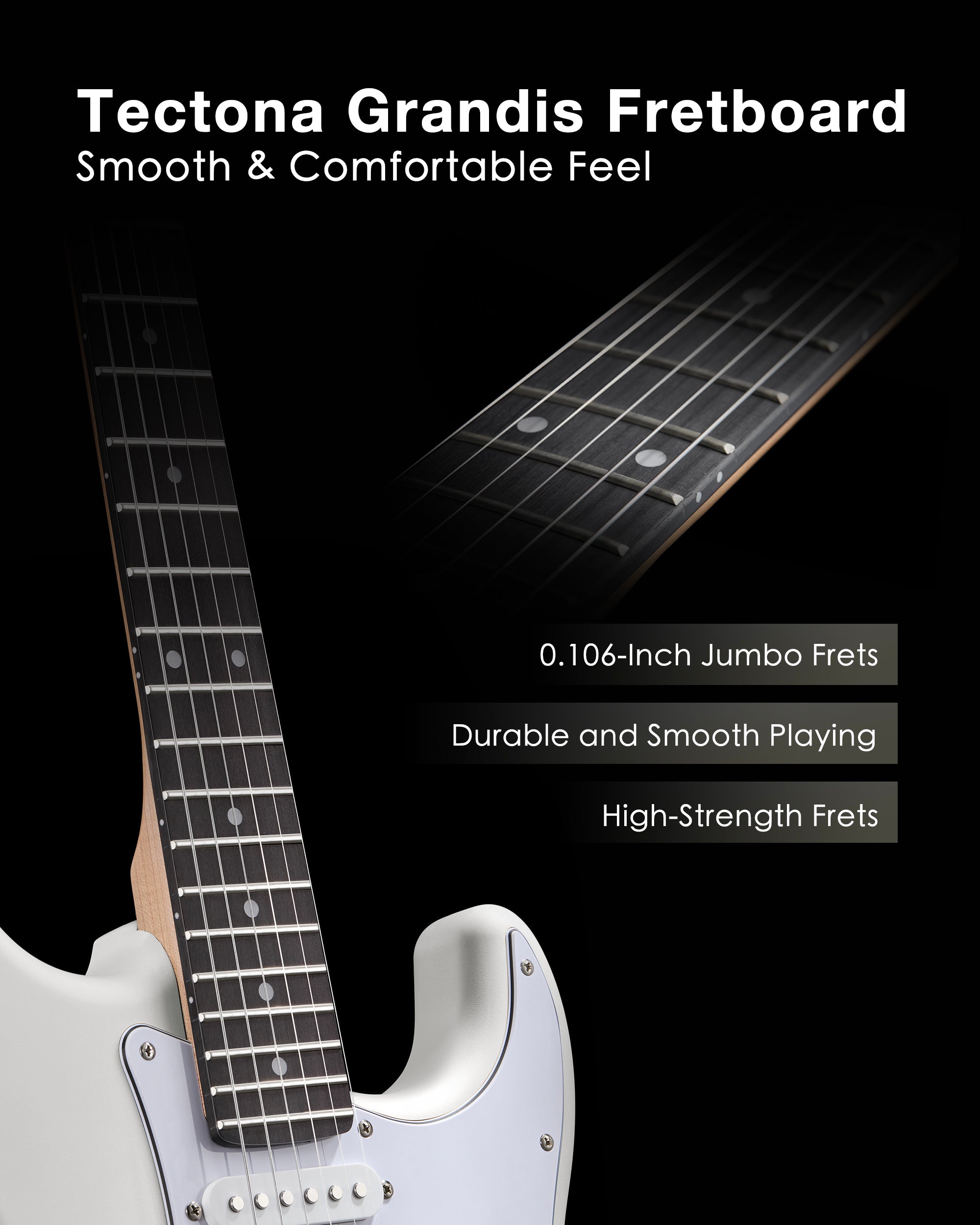




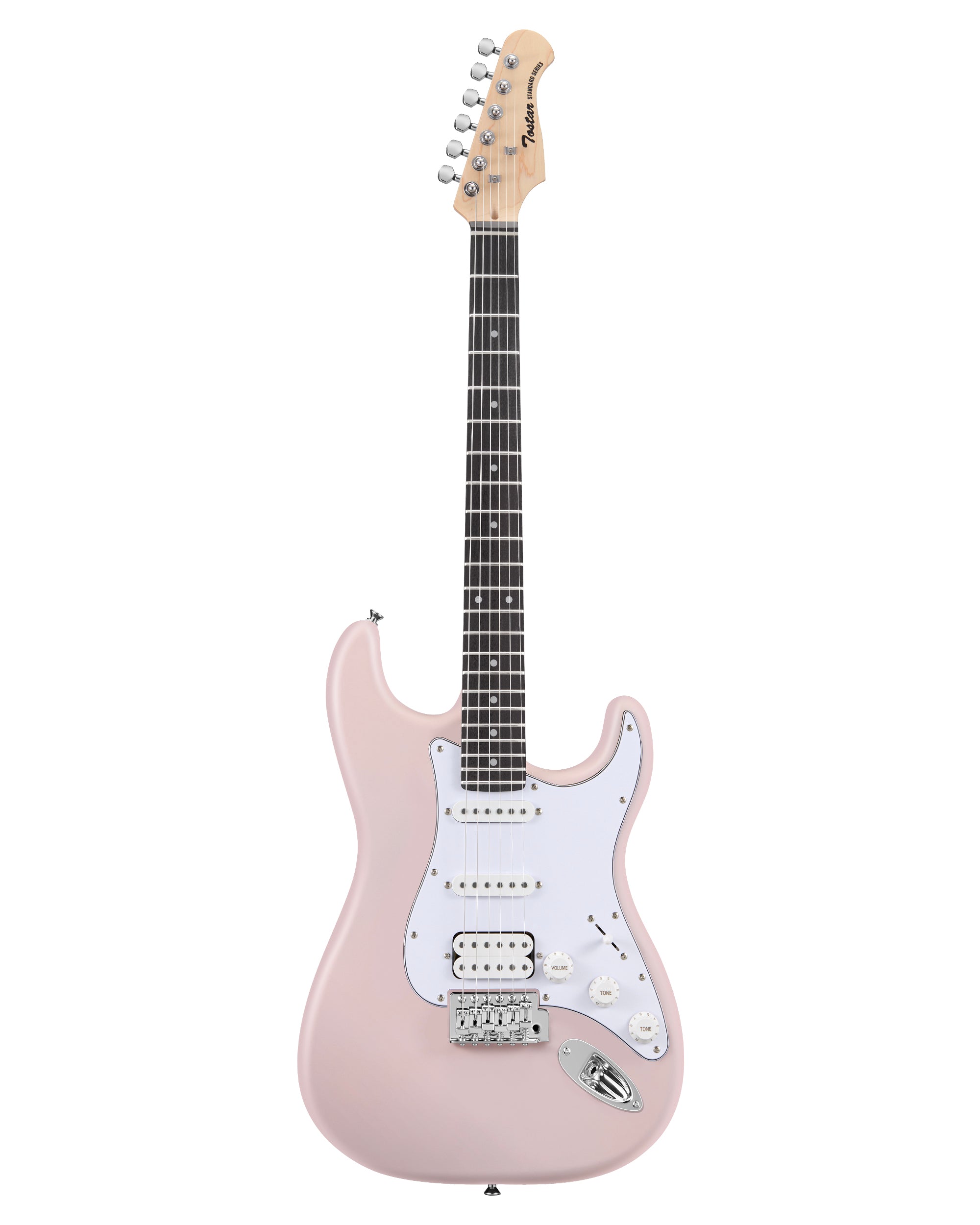


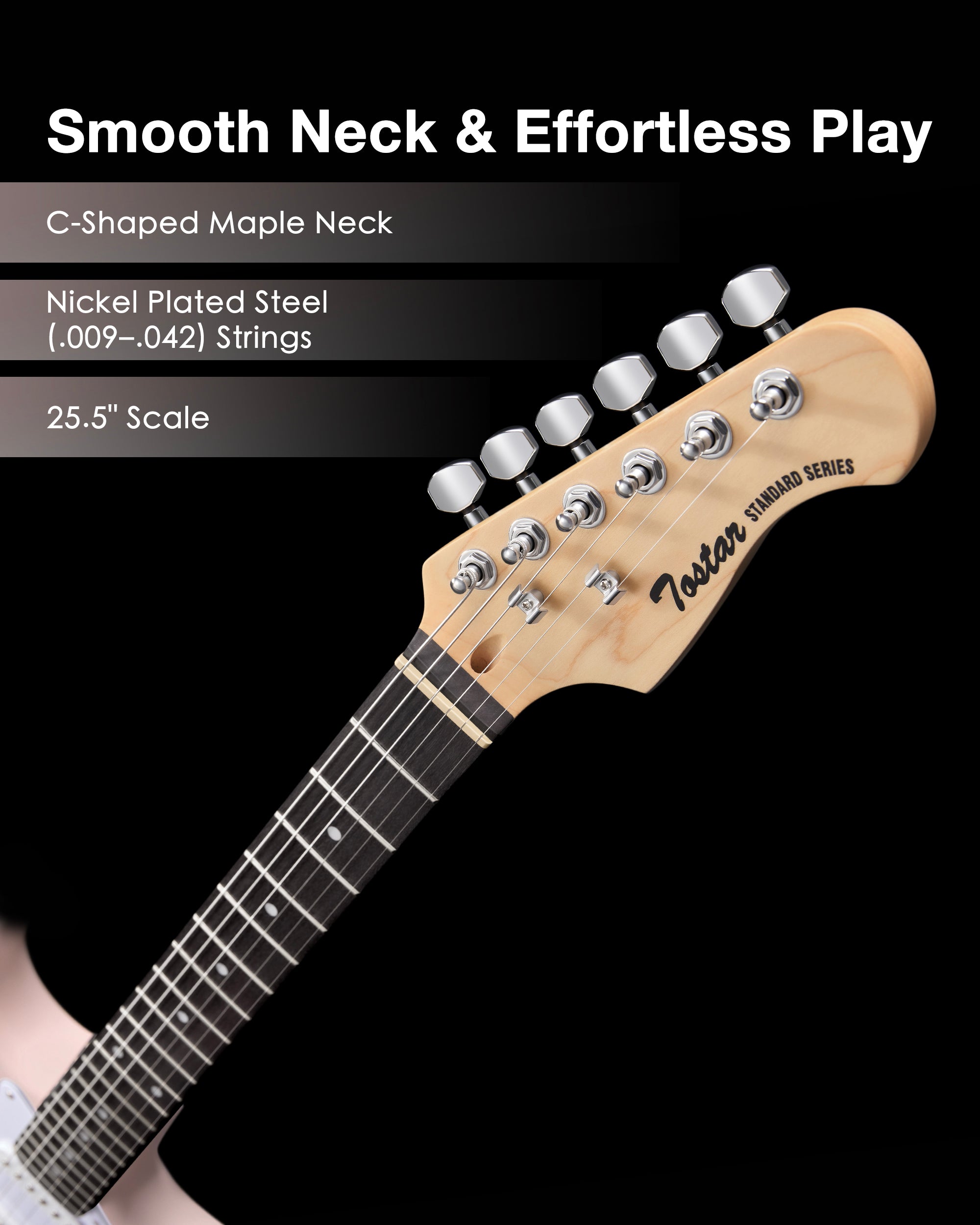


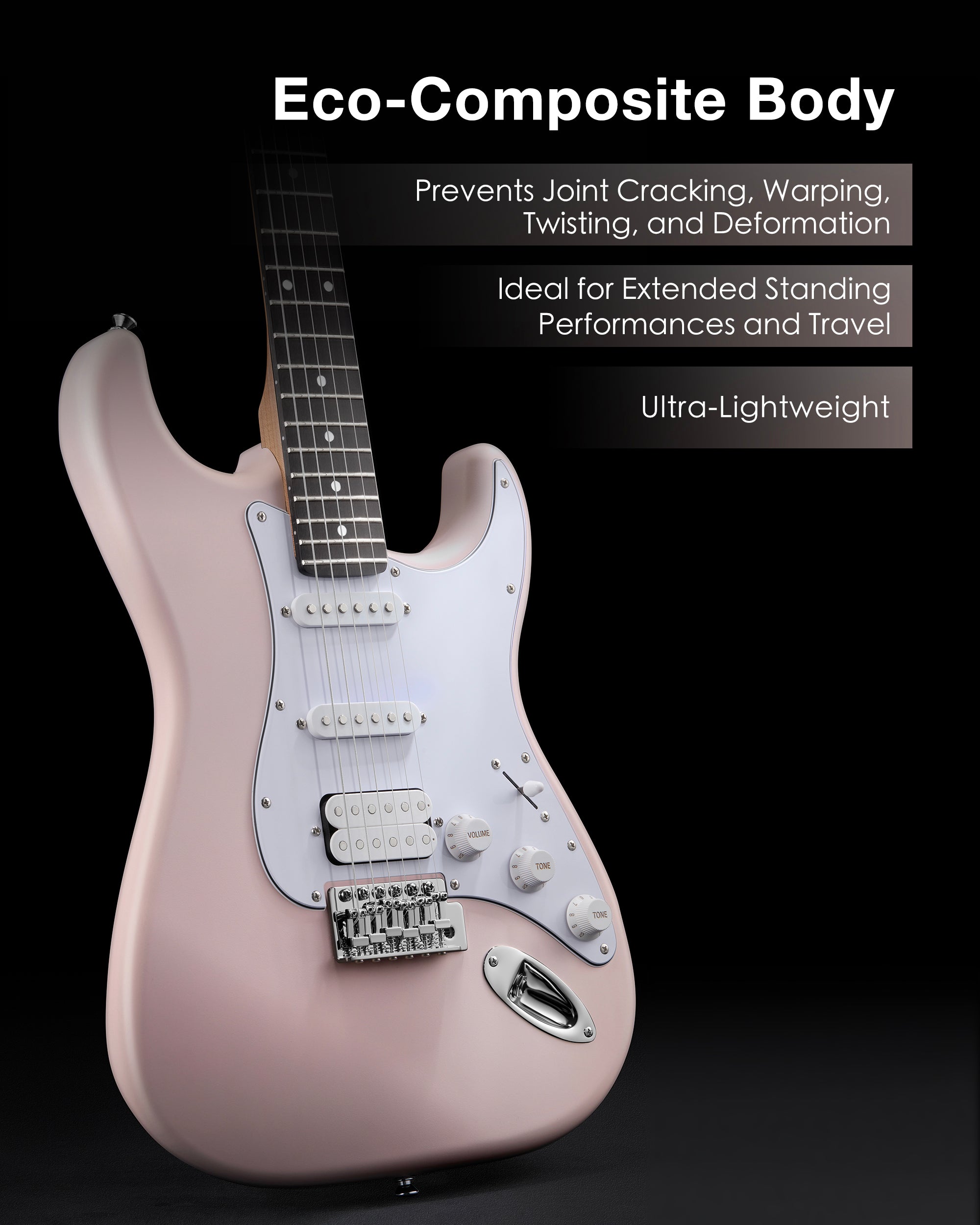




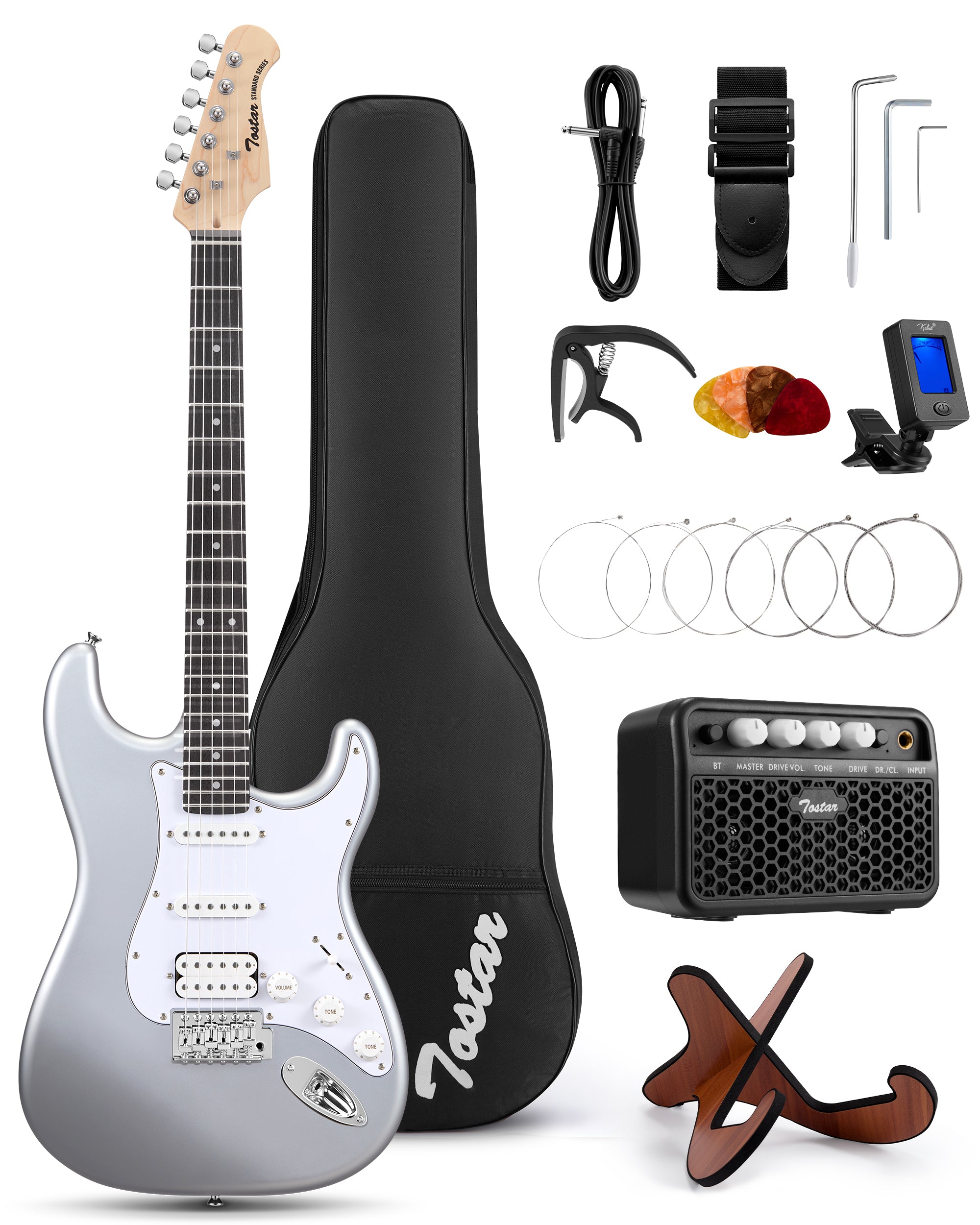
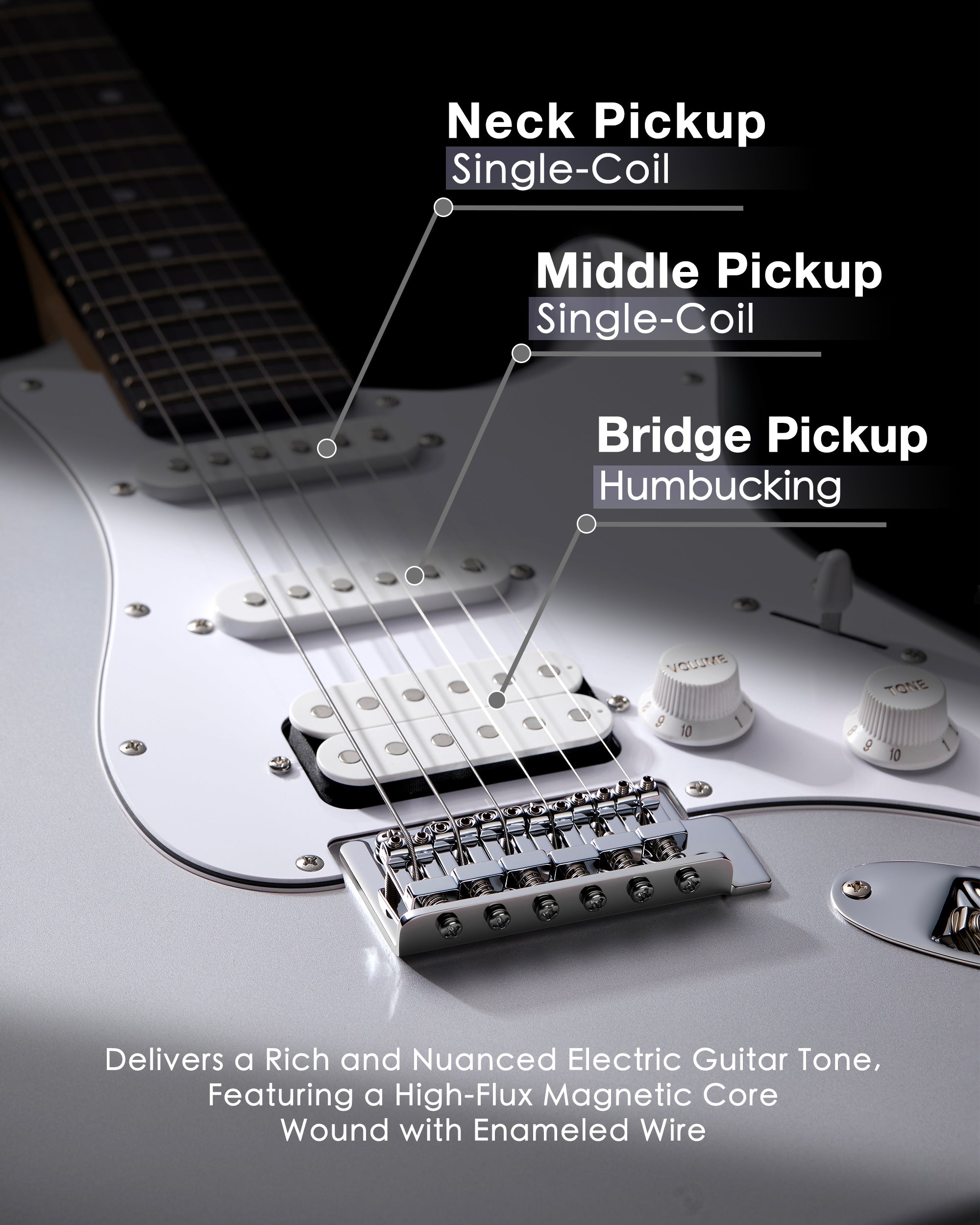
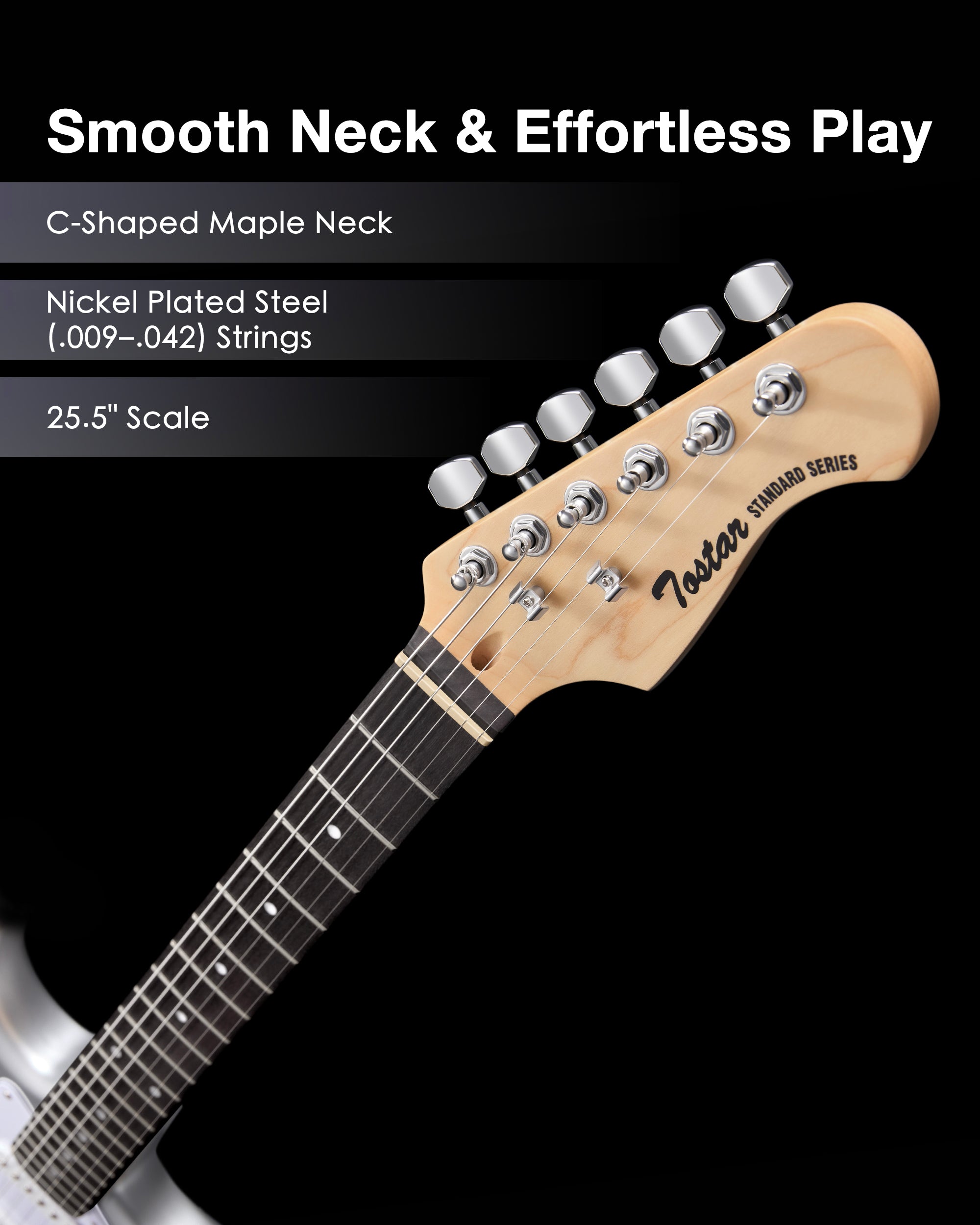

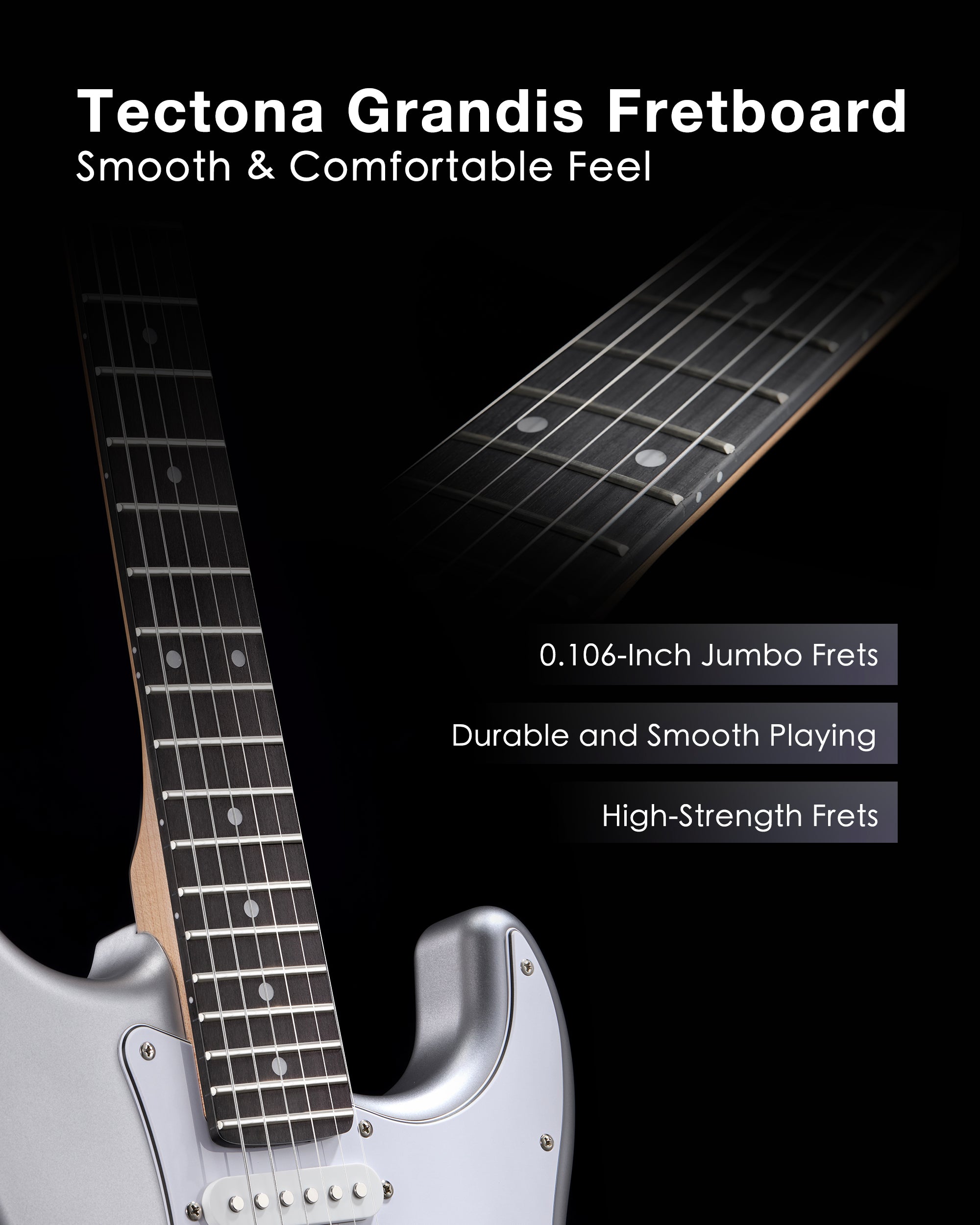




How to Play a C Minor Chord on Guitar
How to Play the B Minor Chord on Guitar